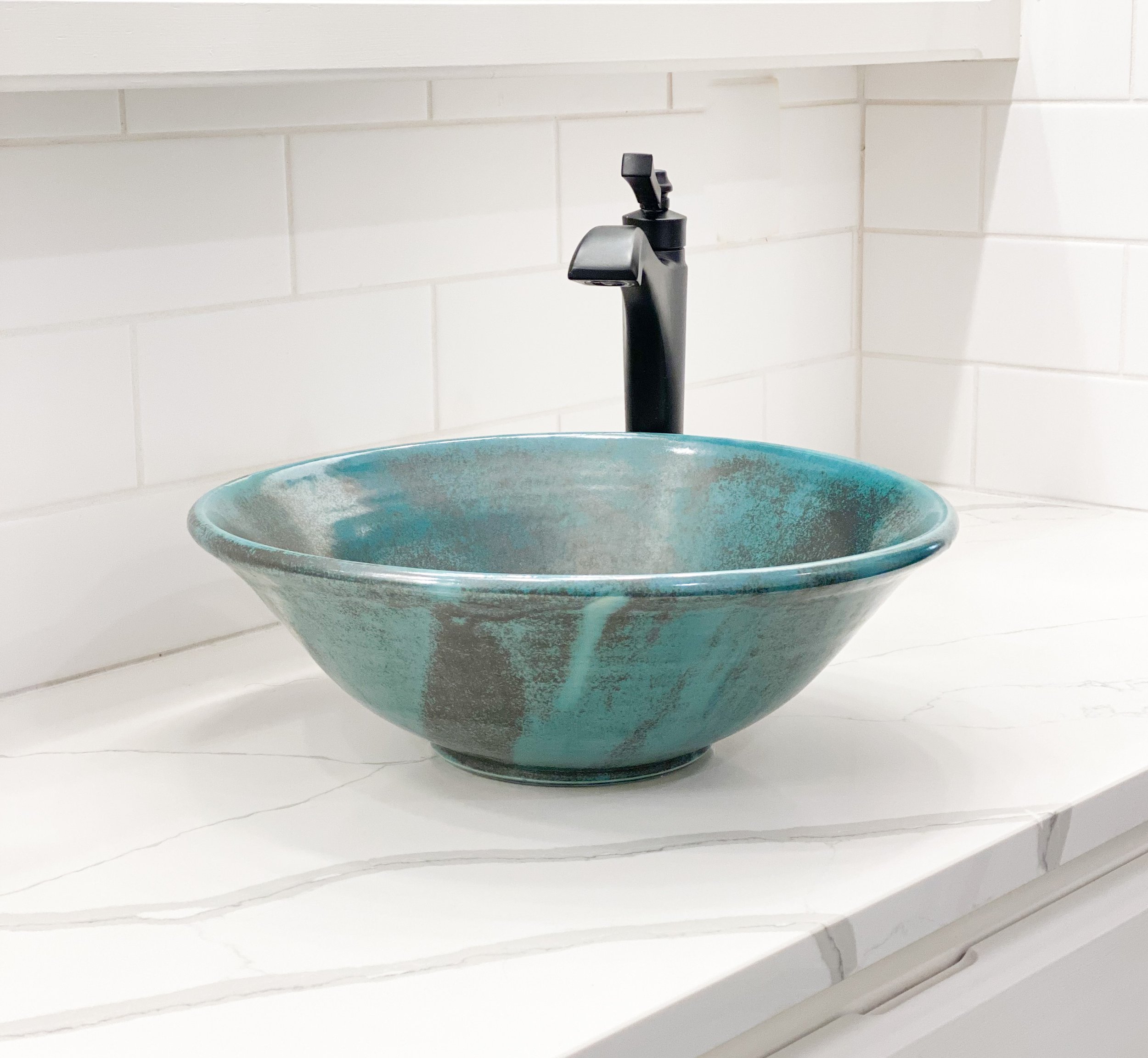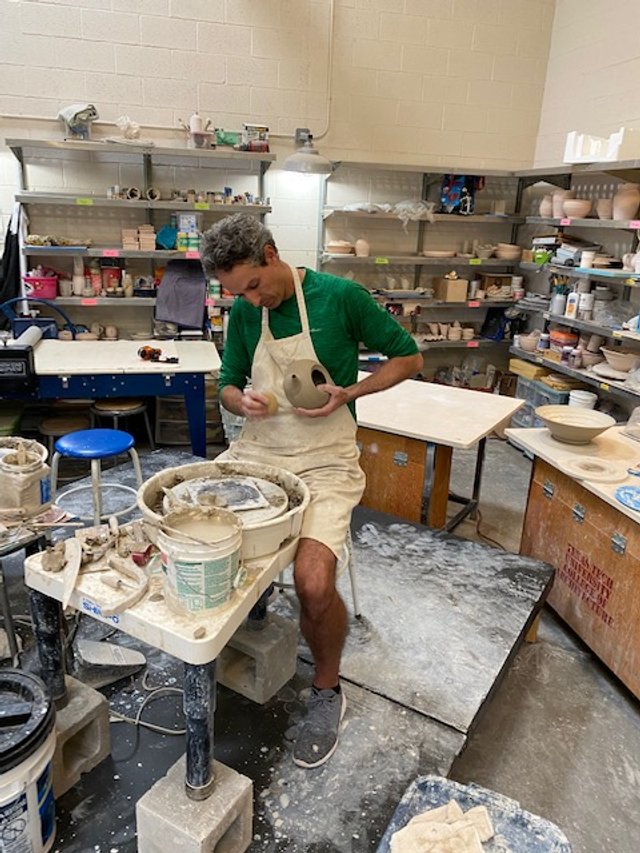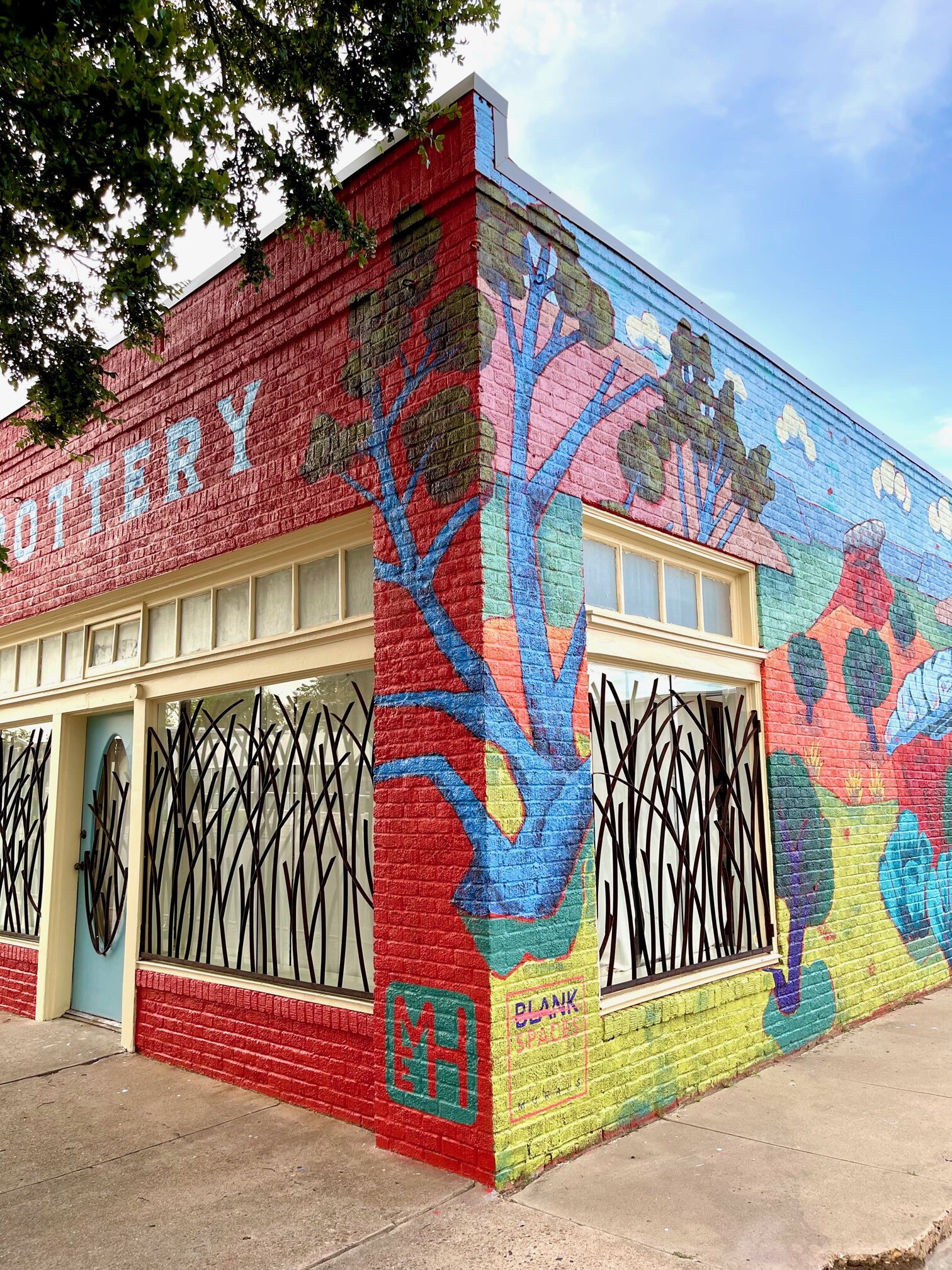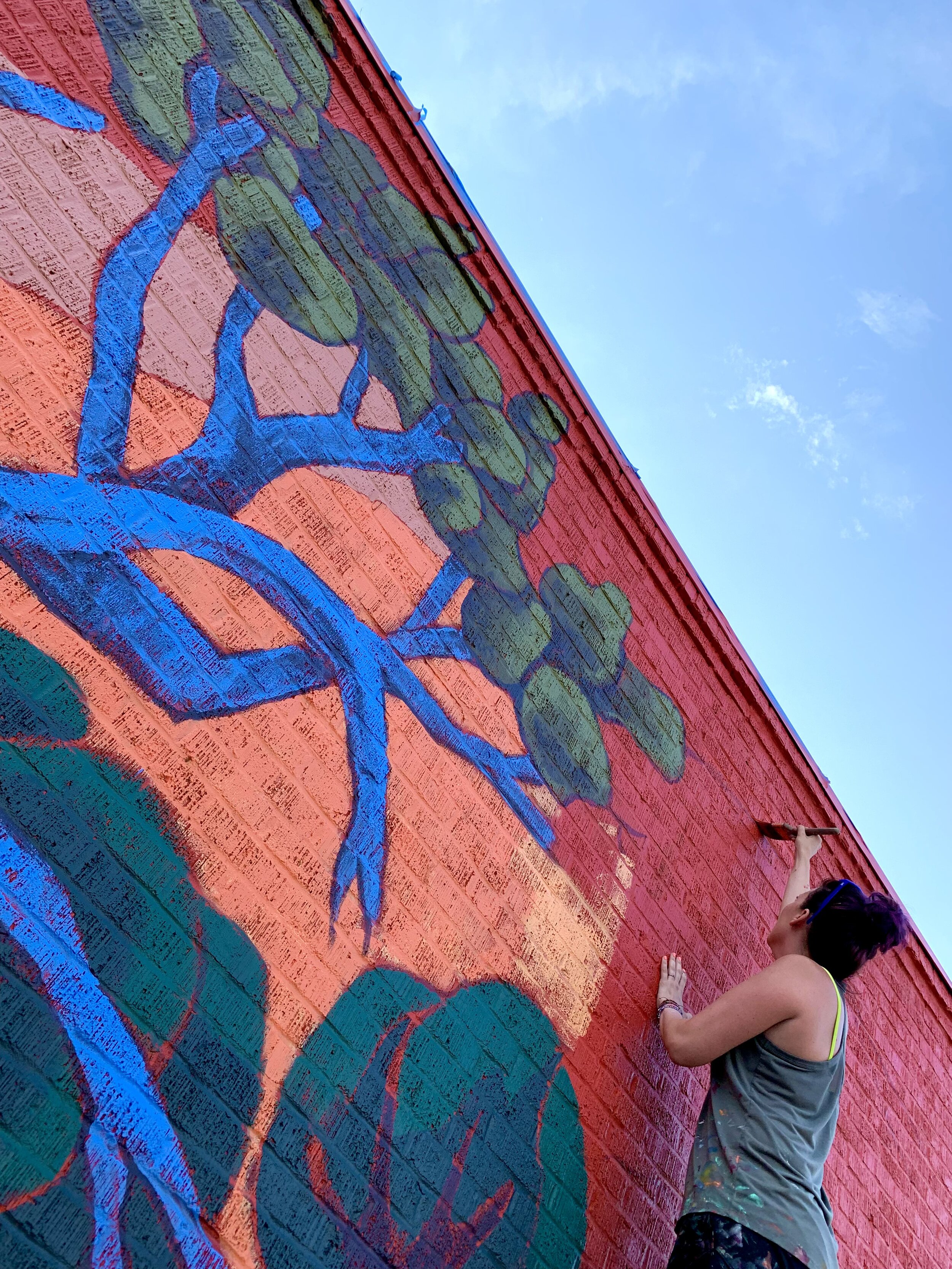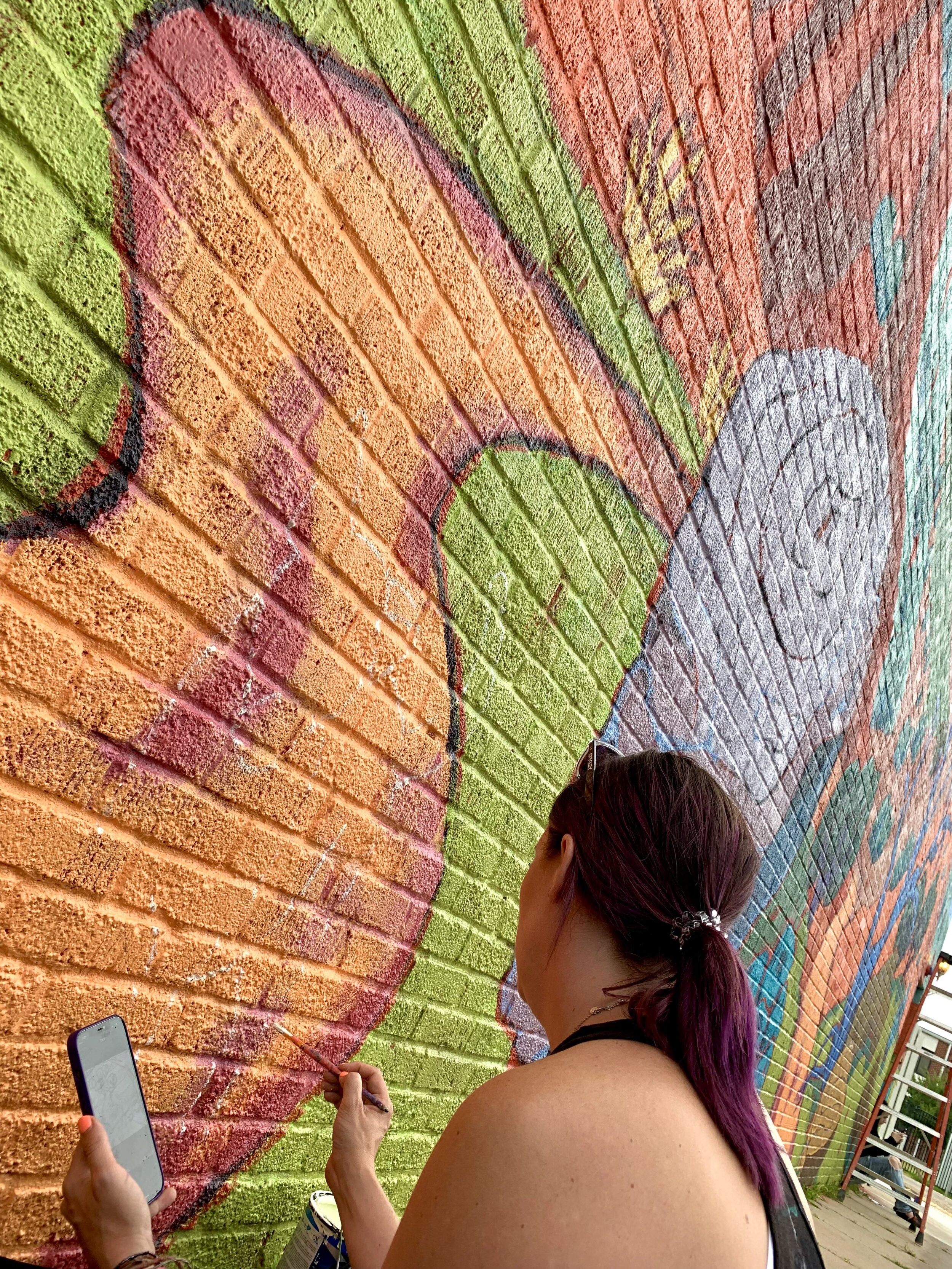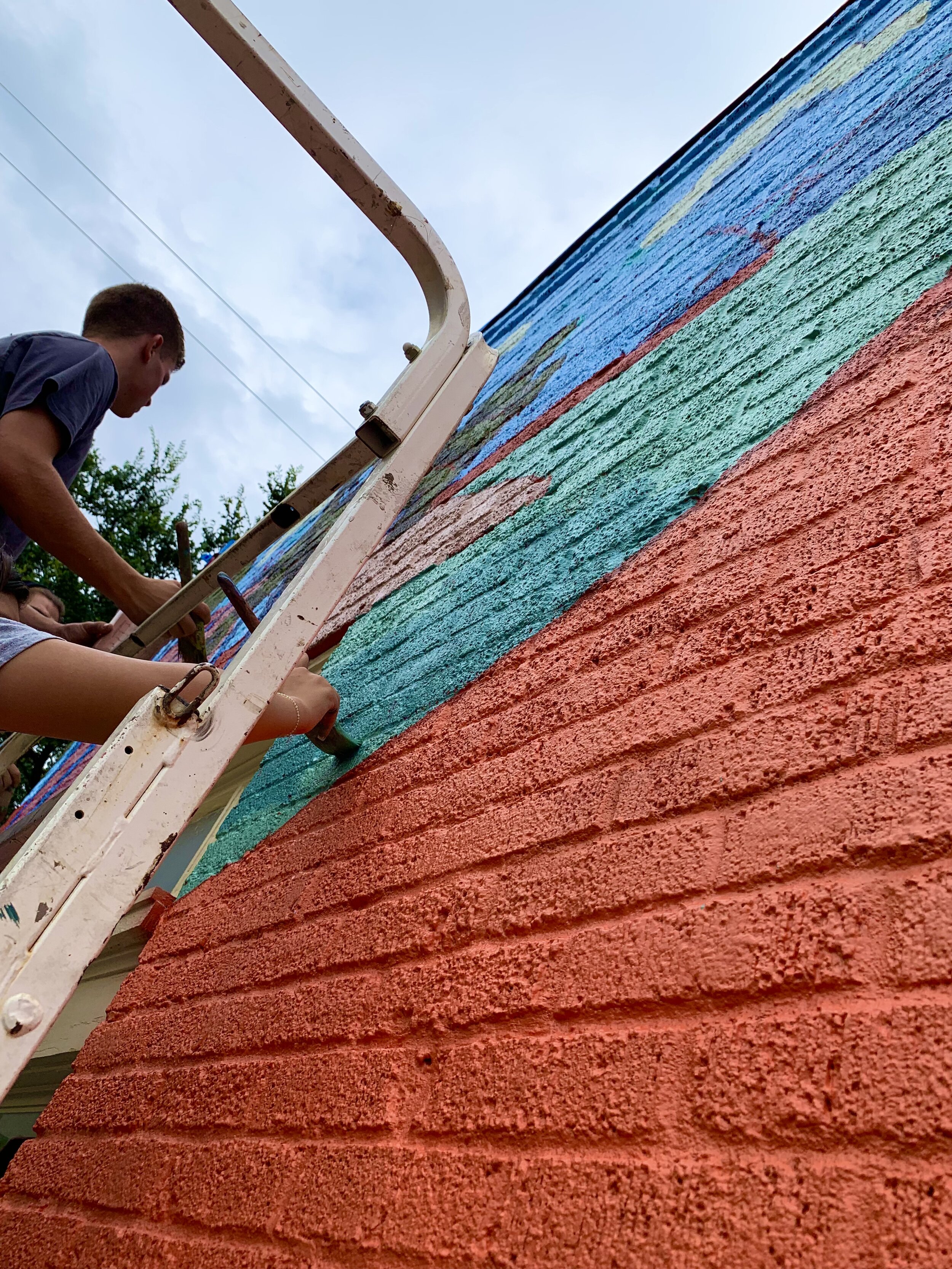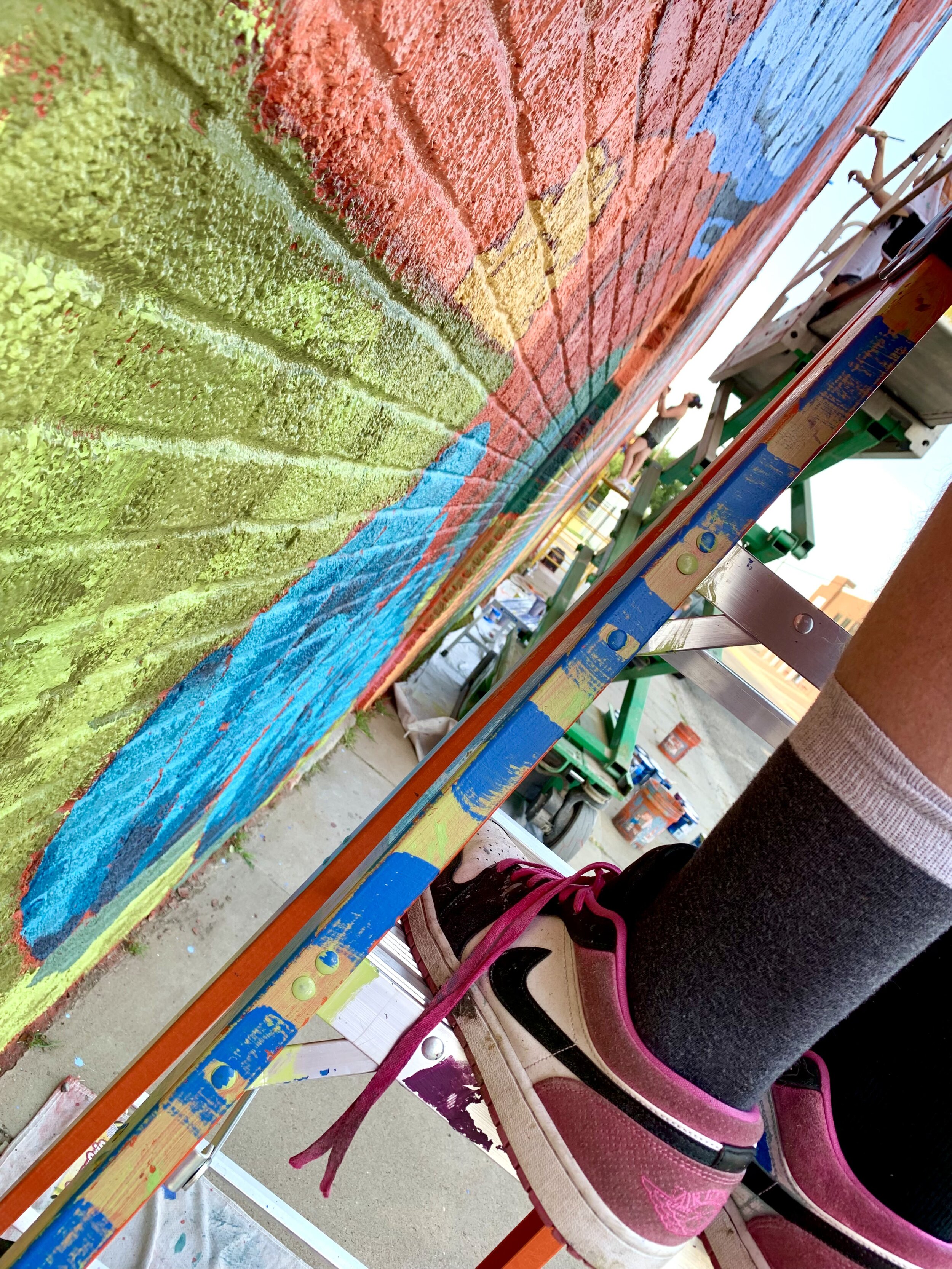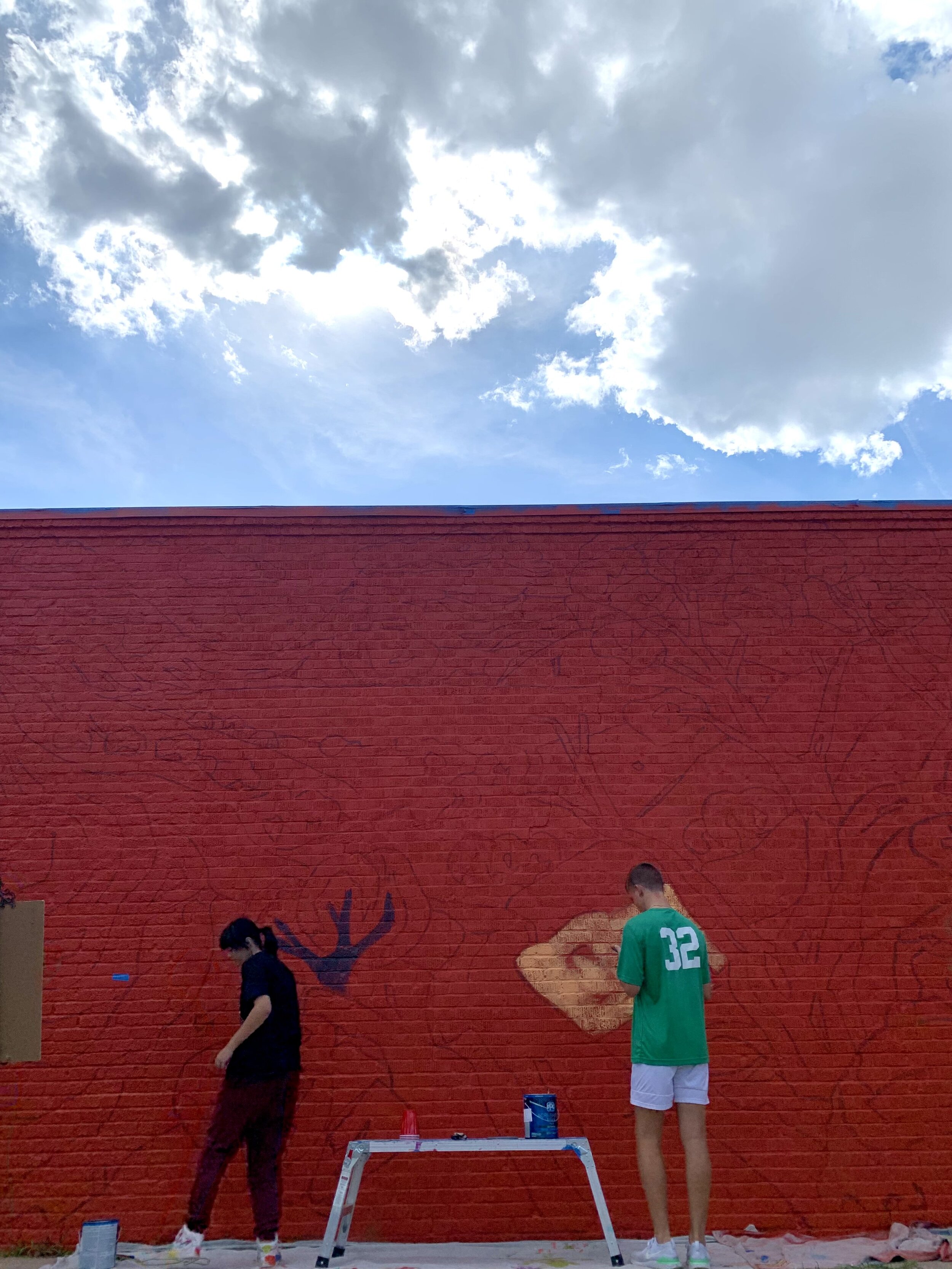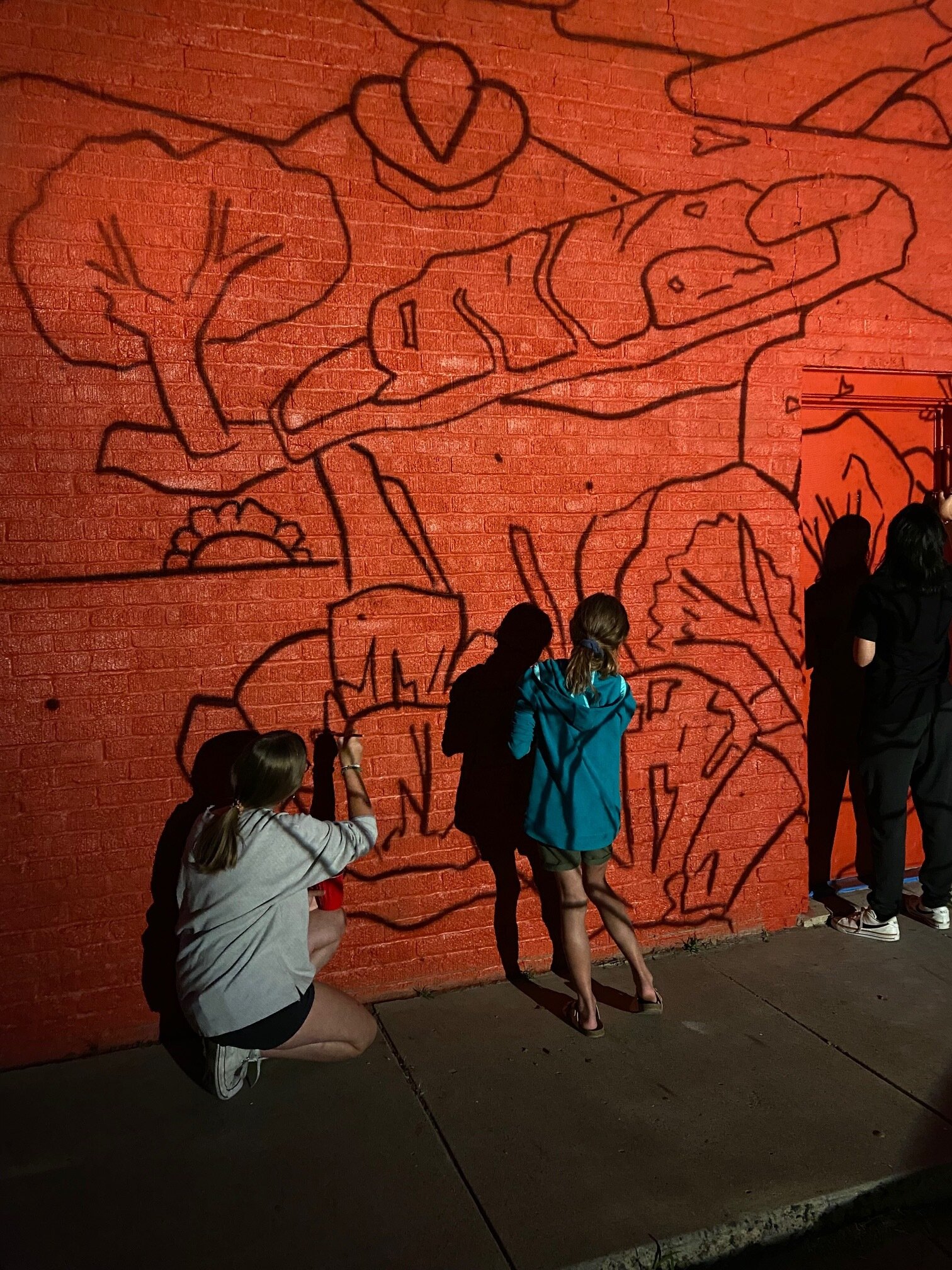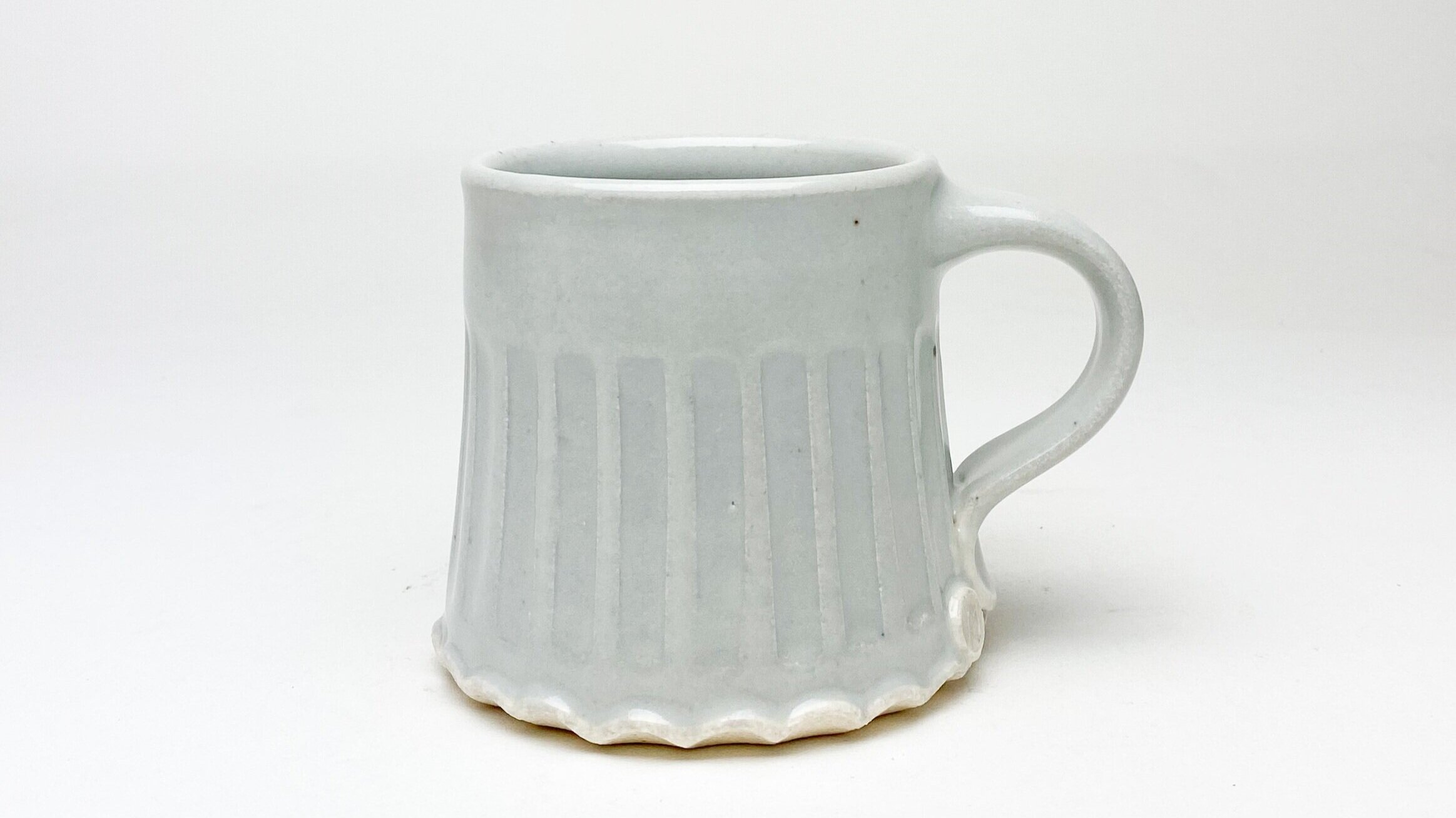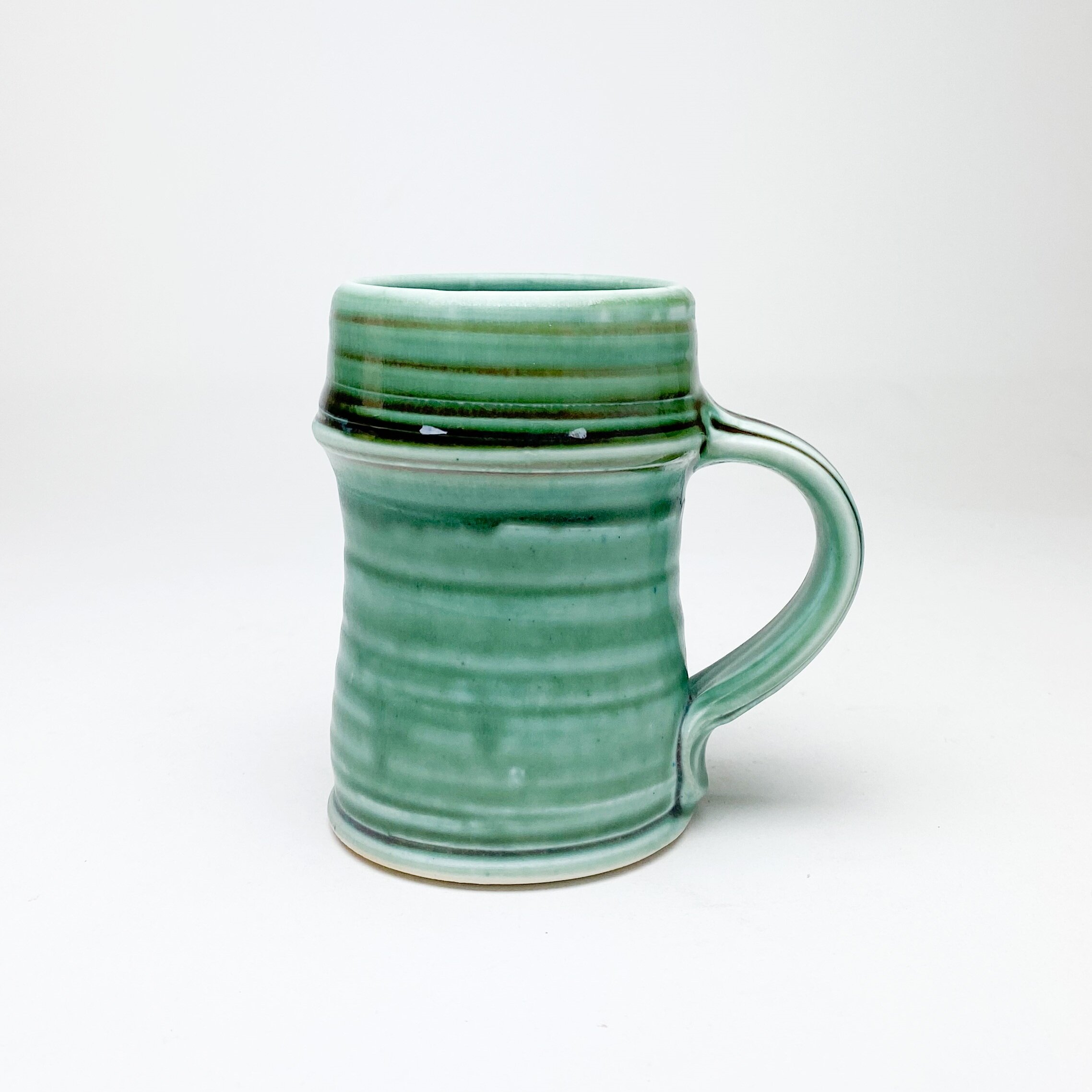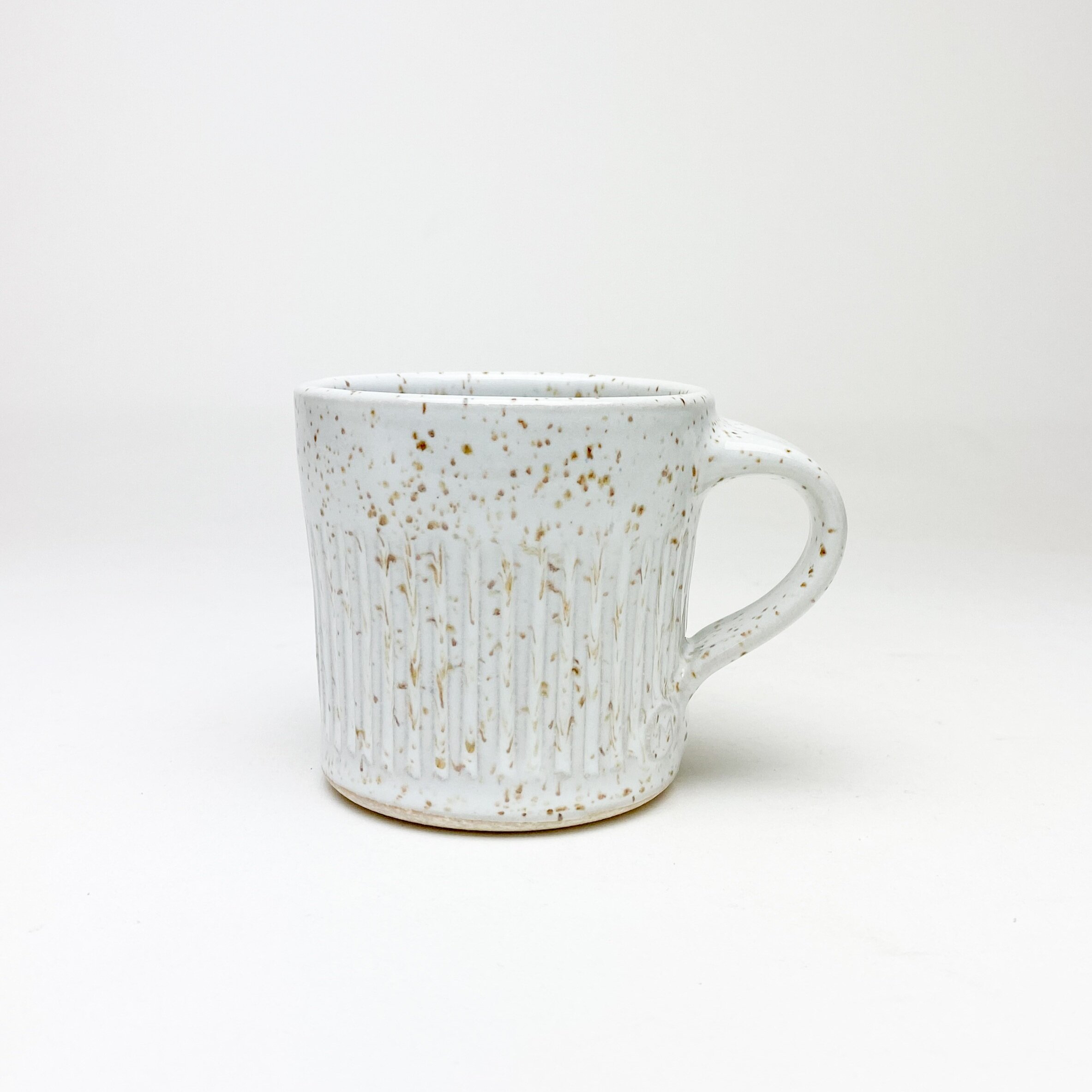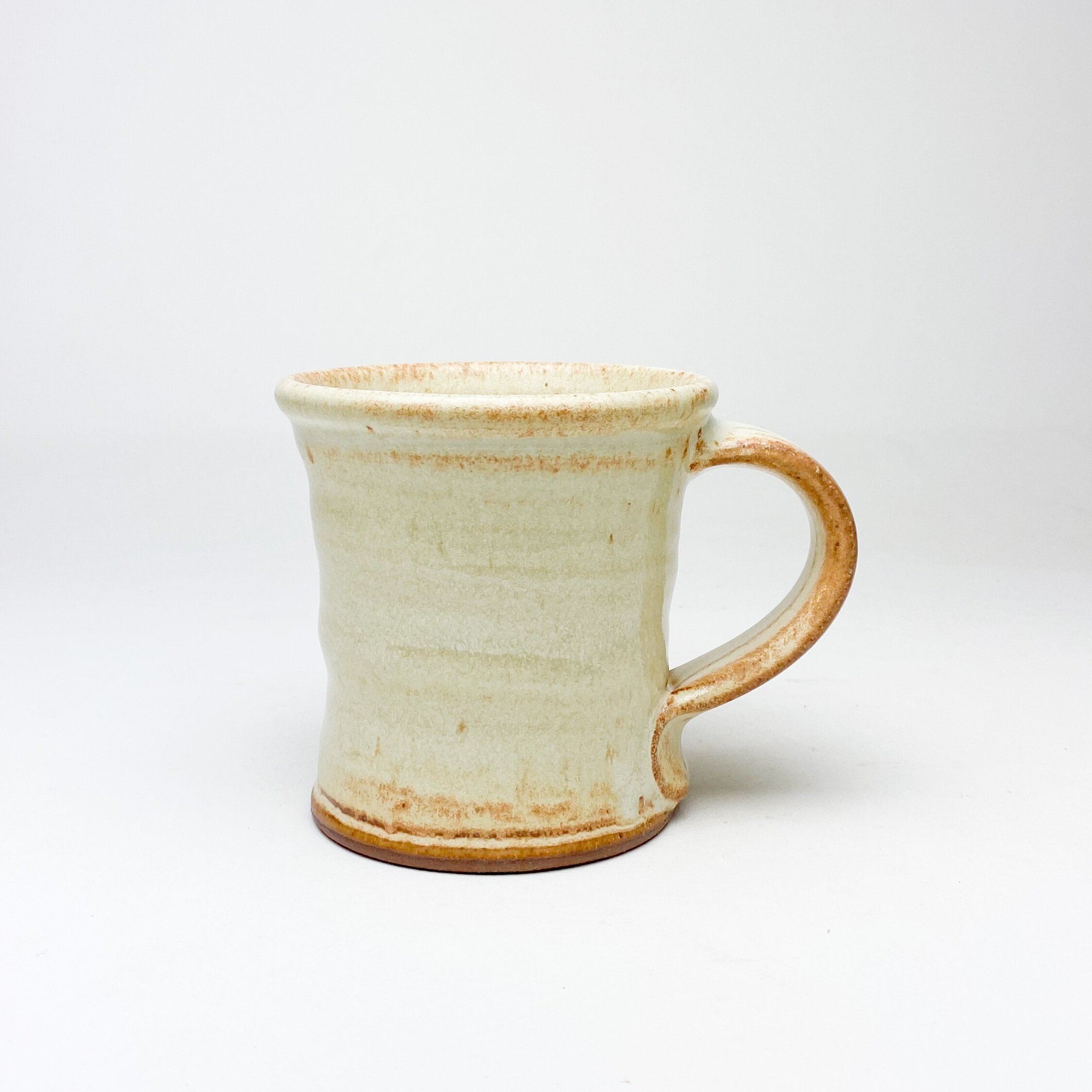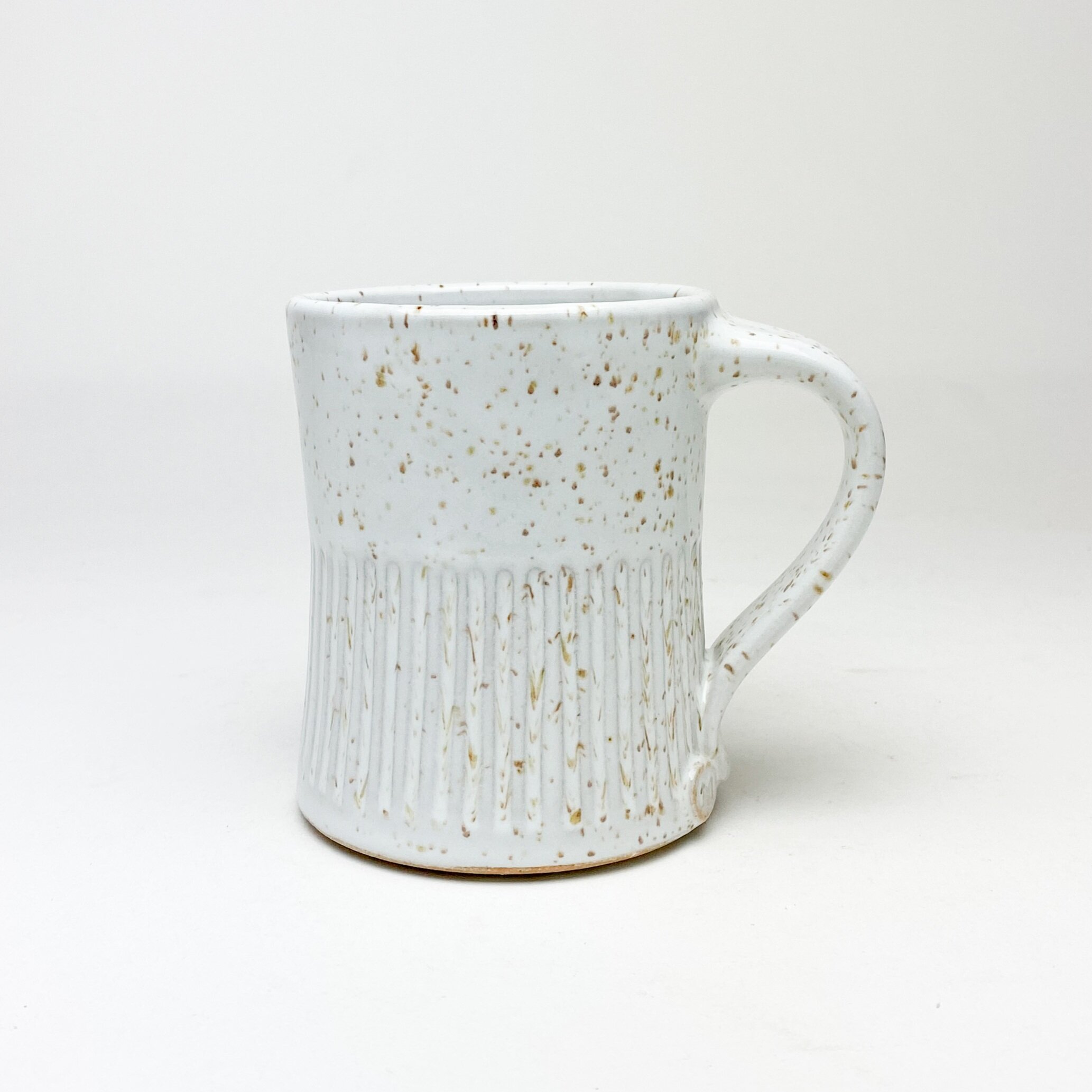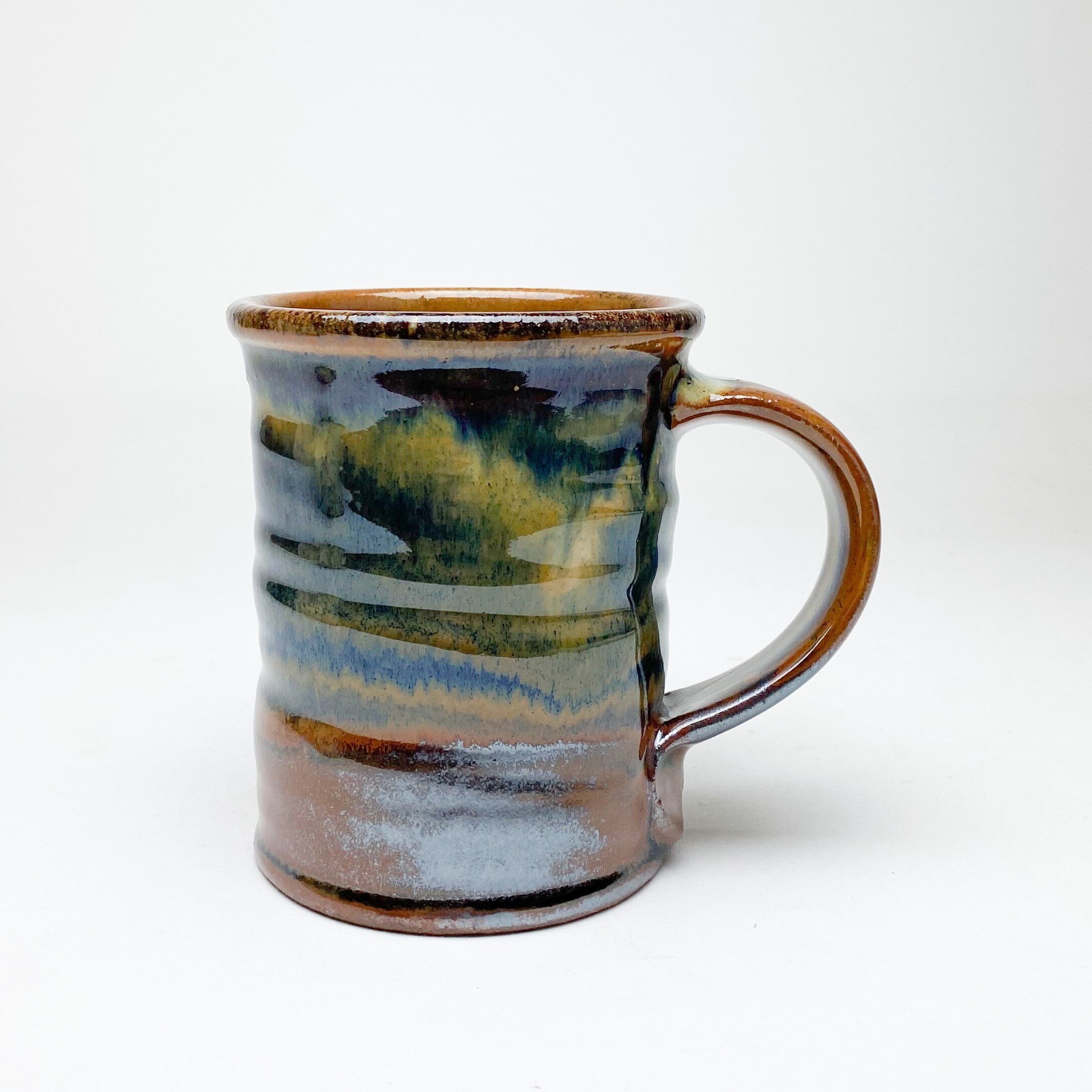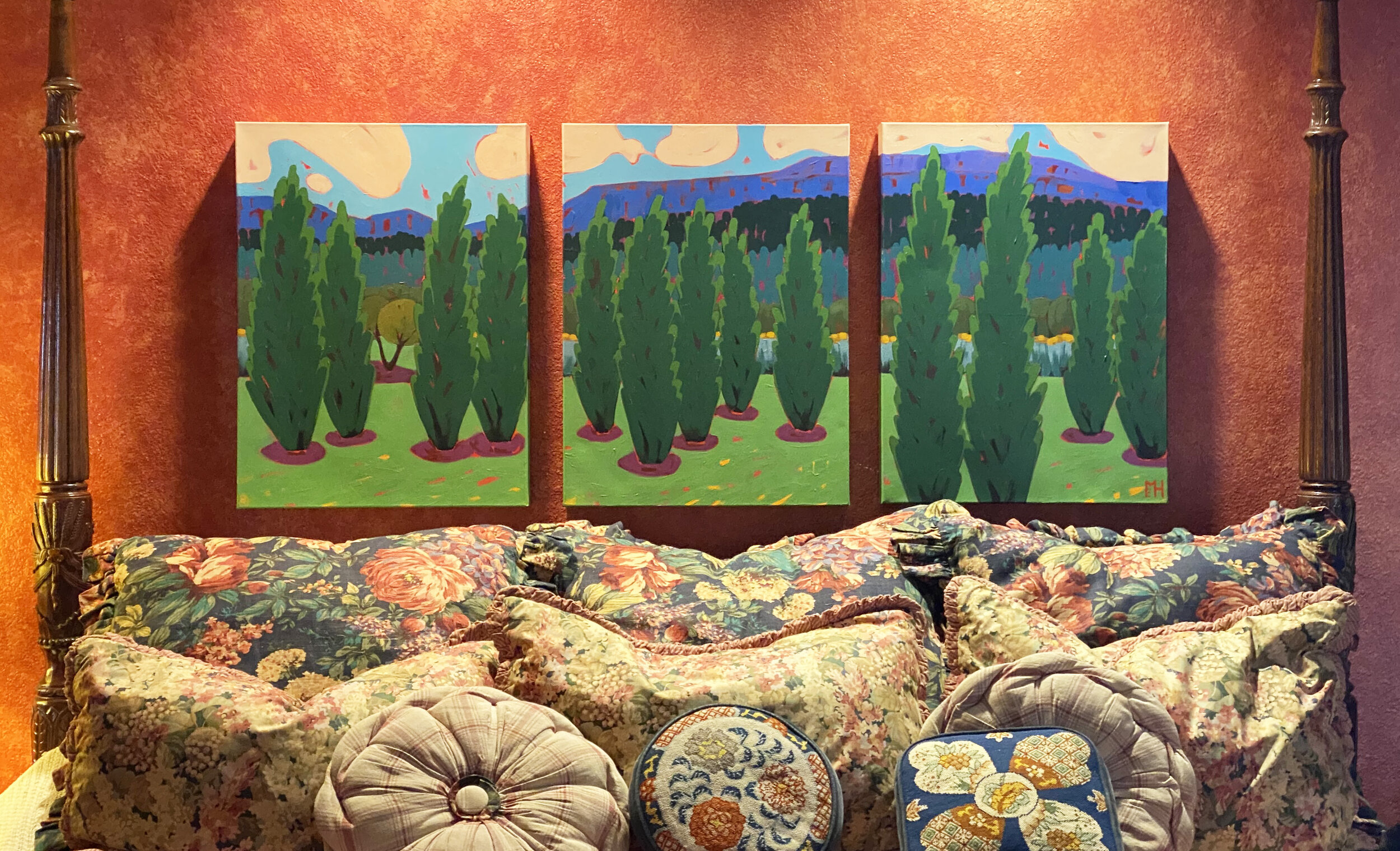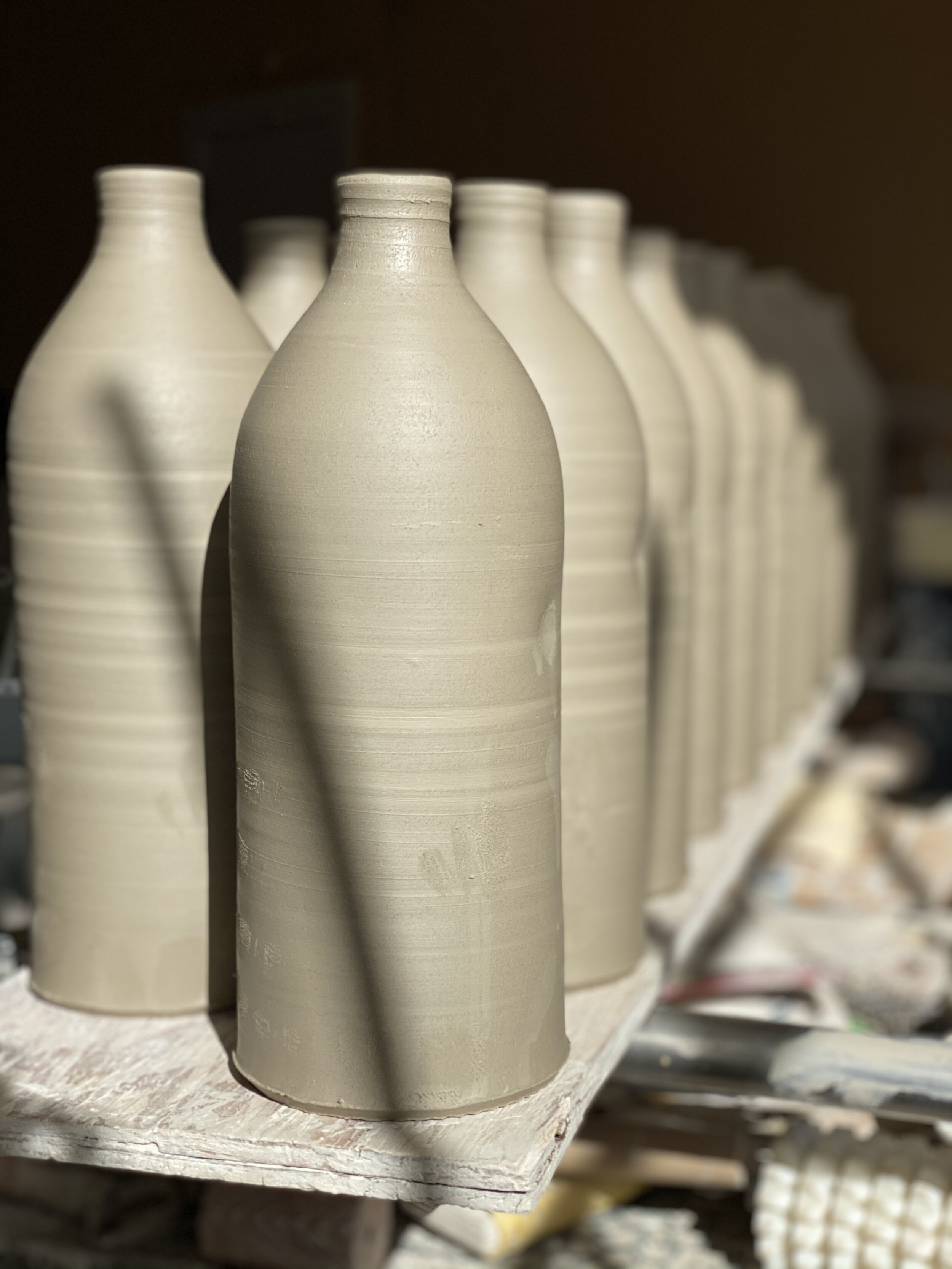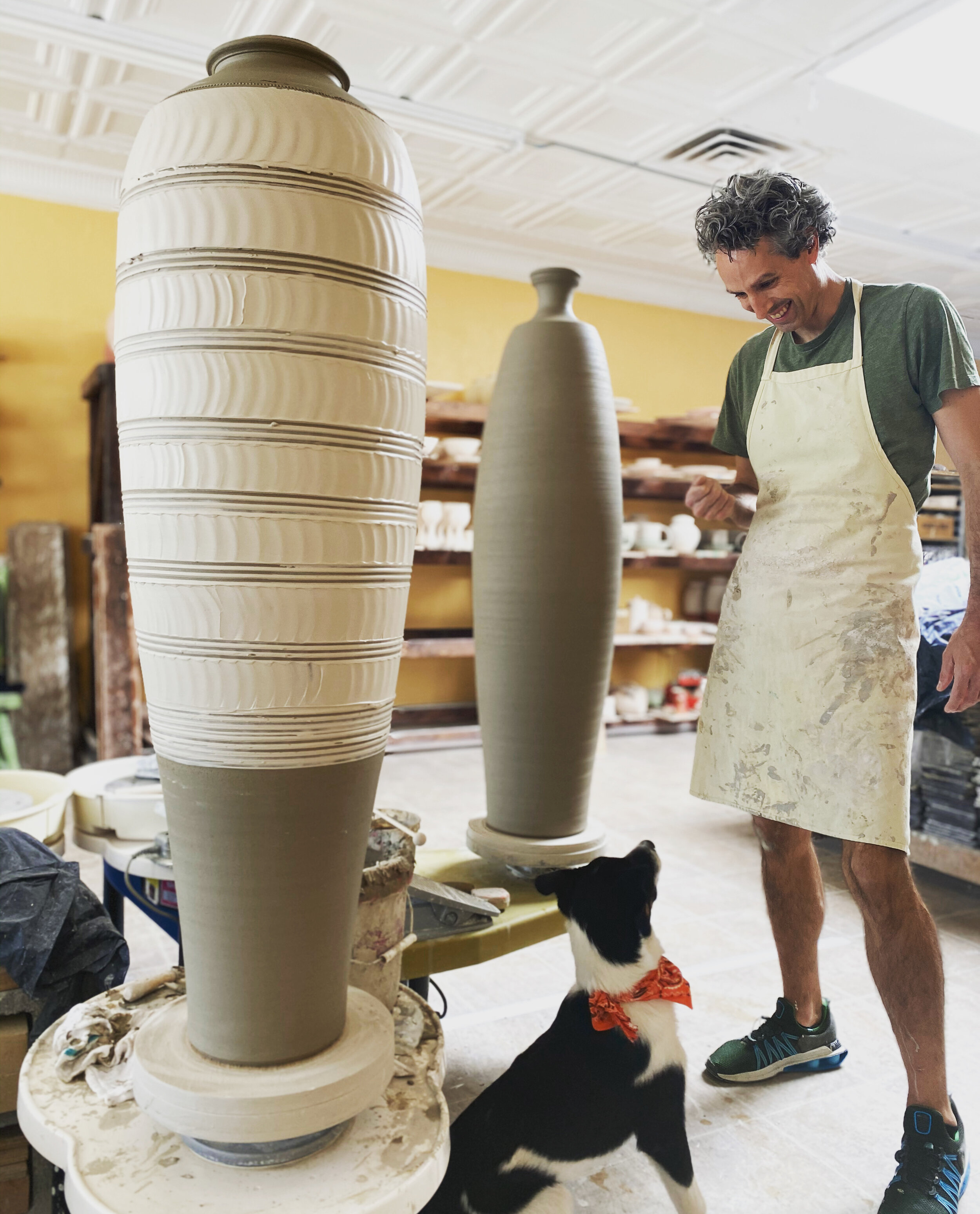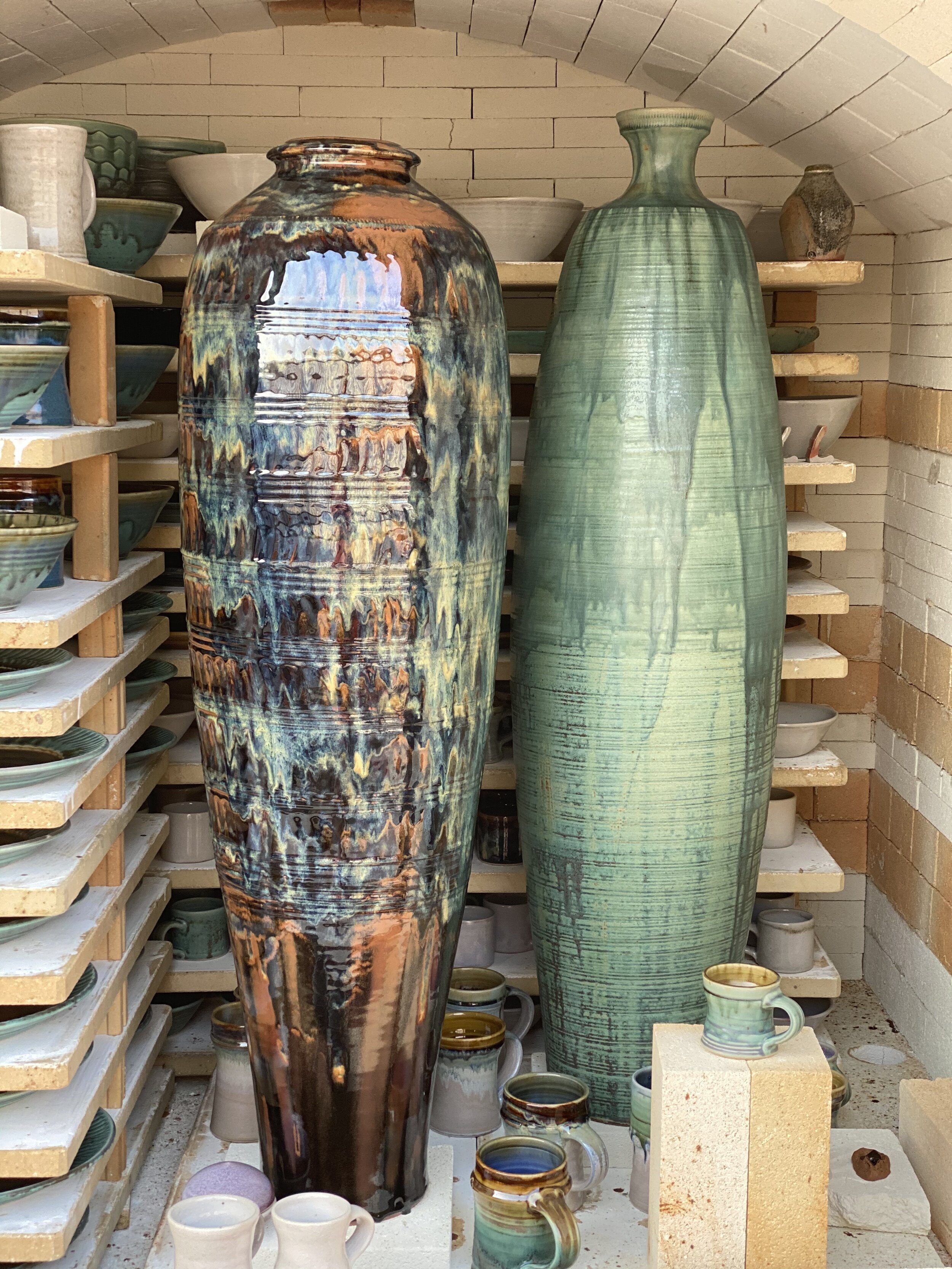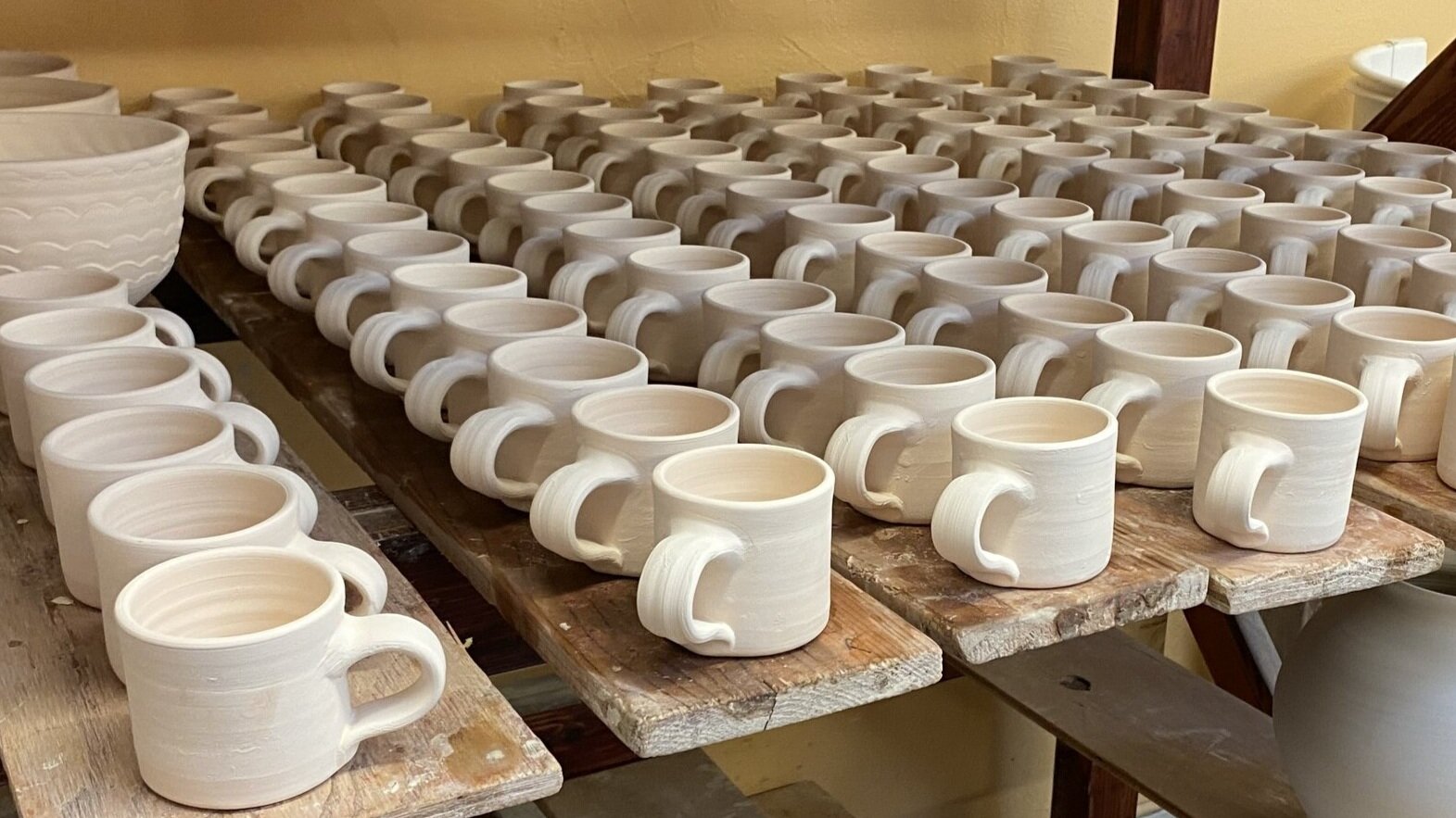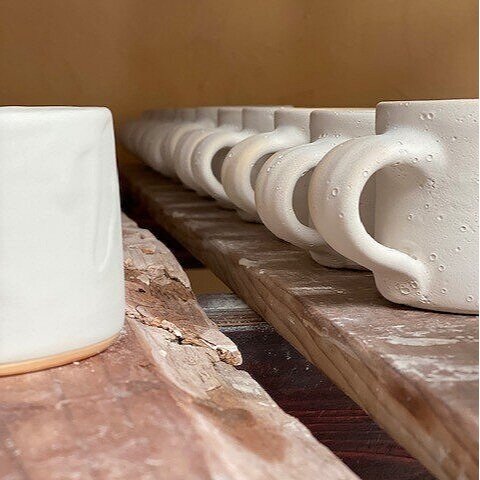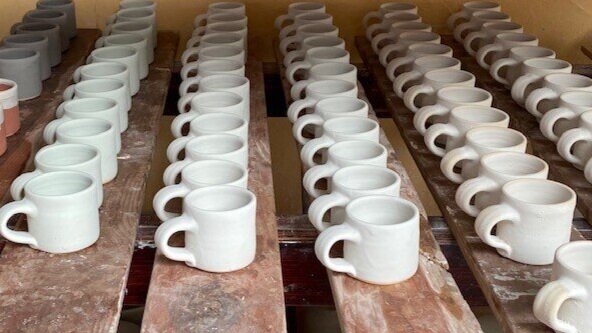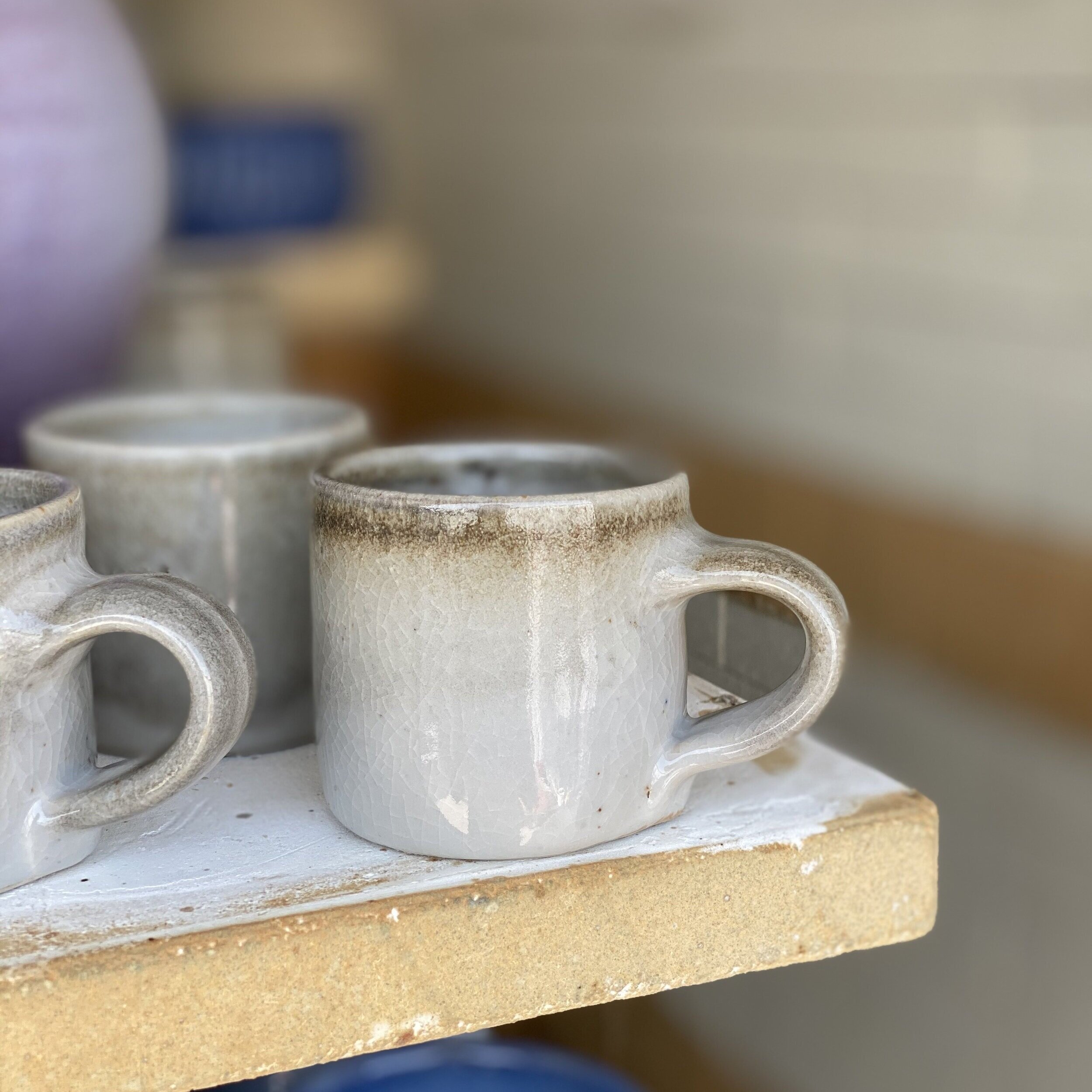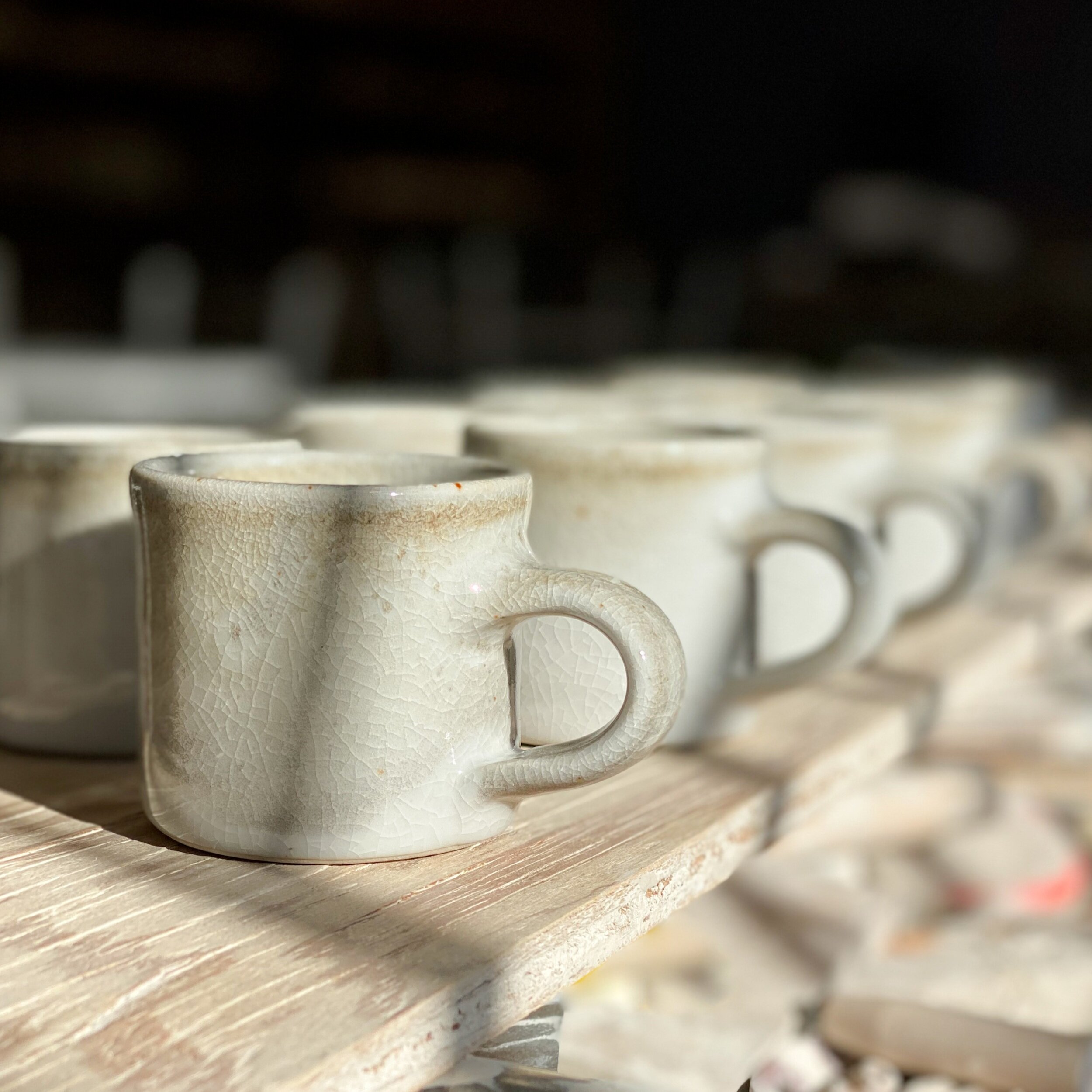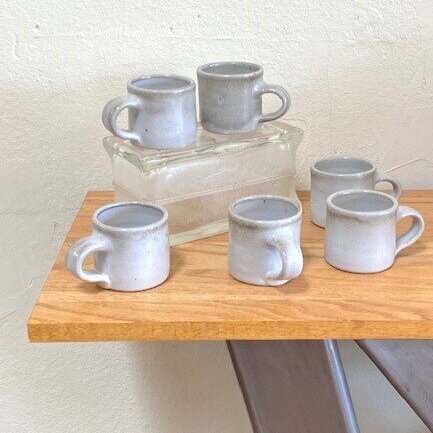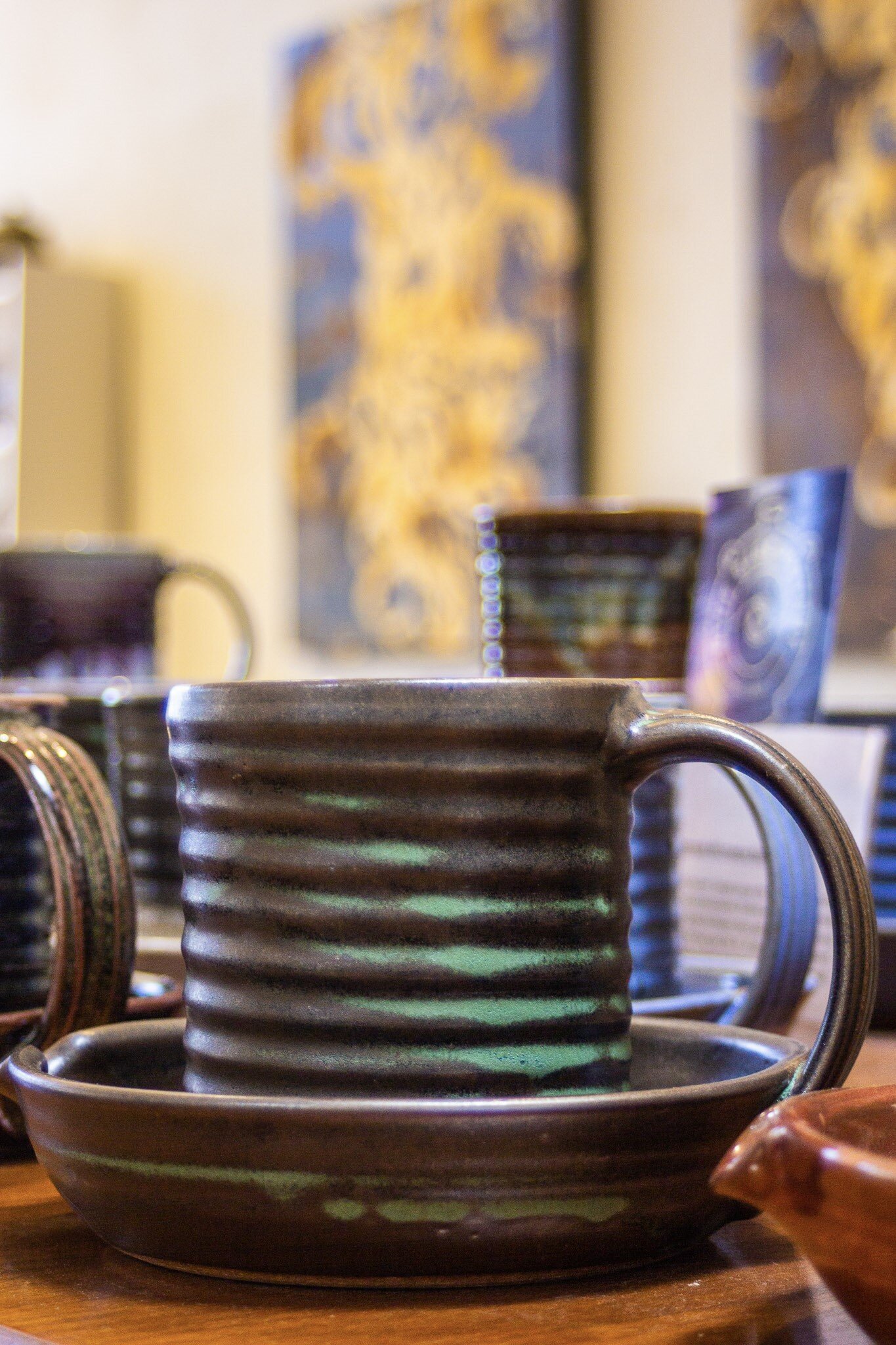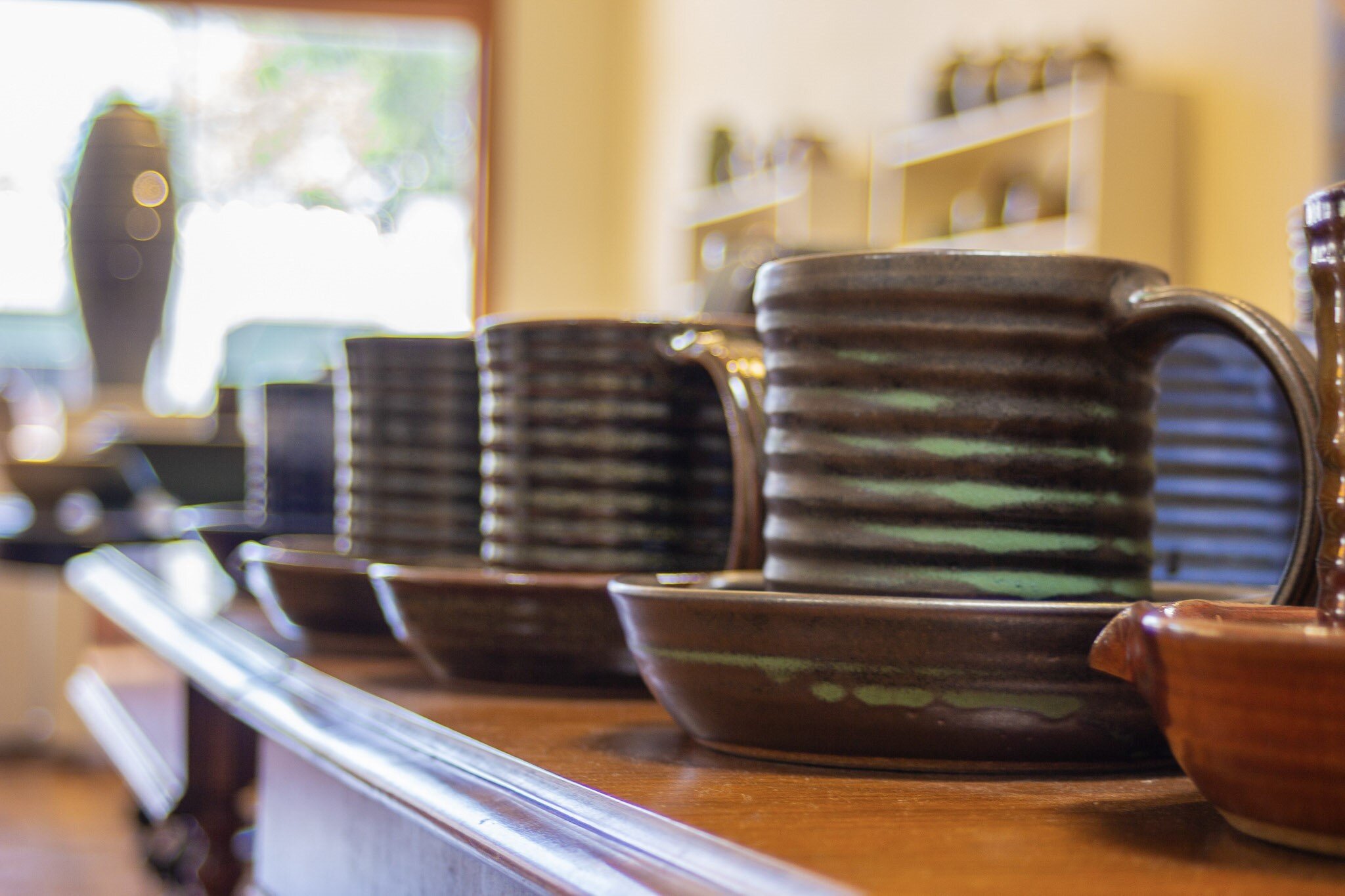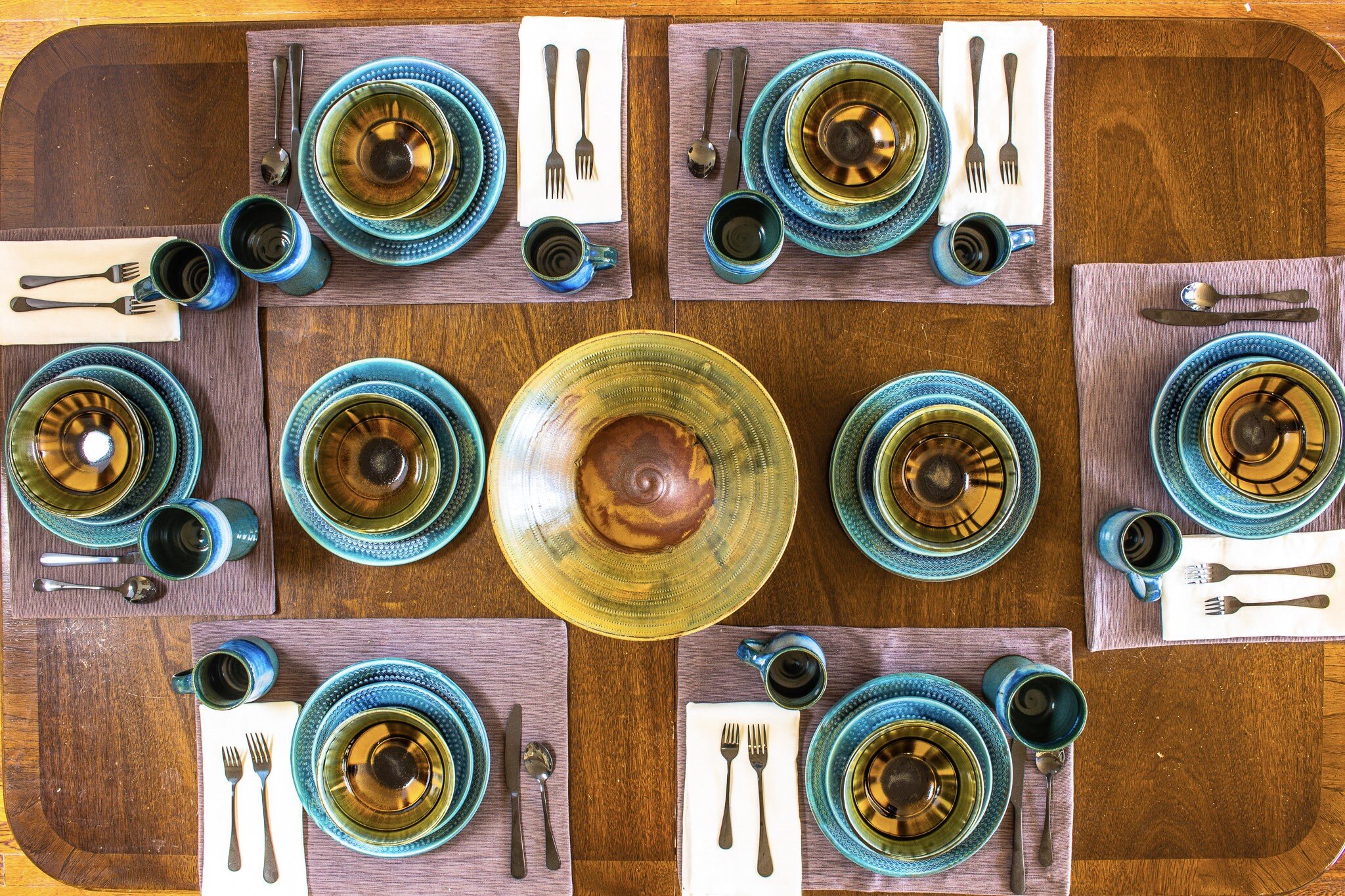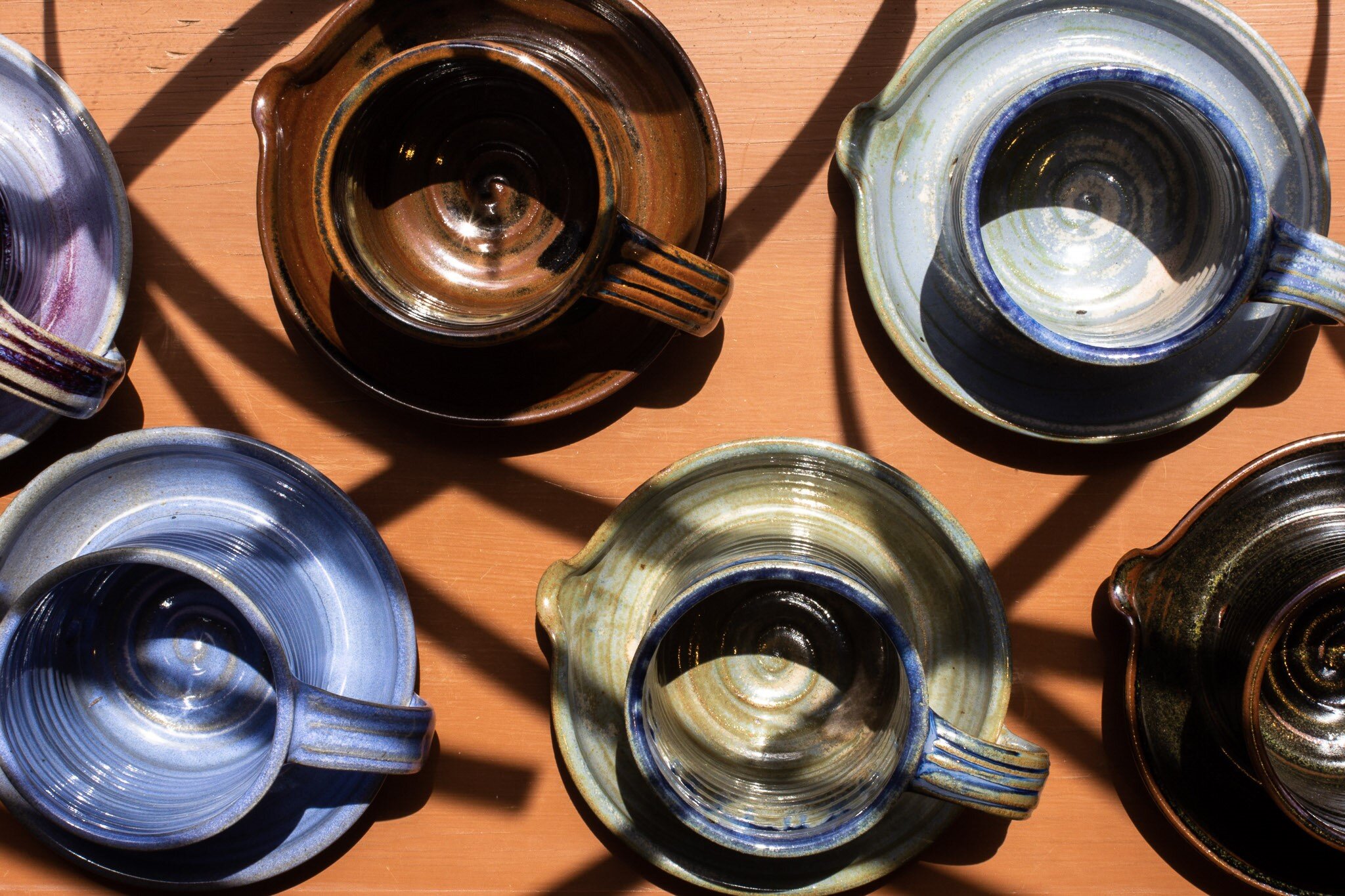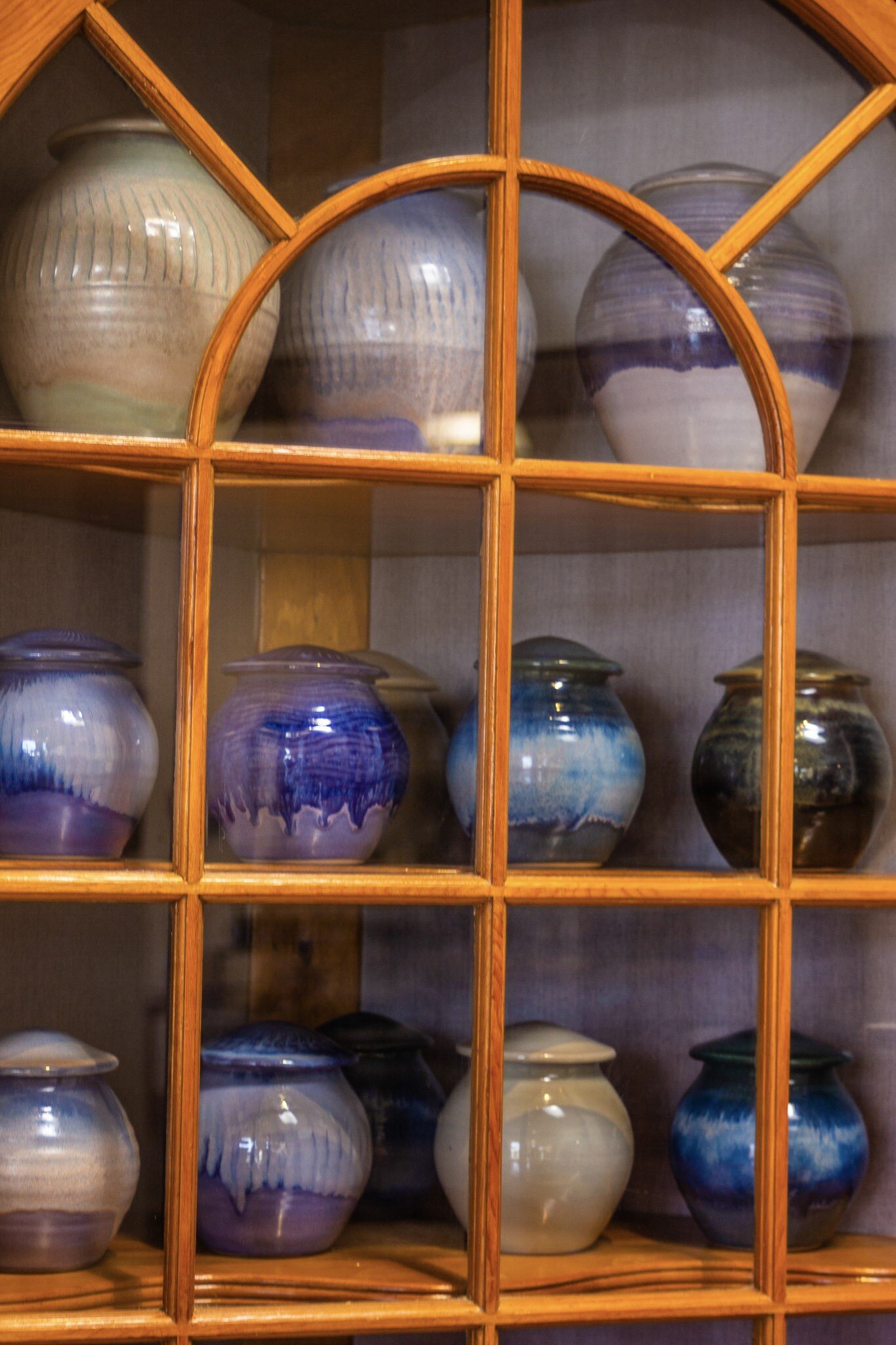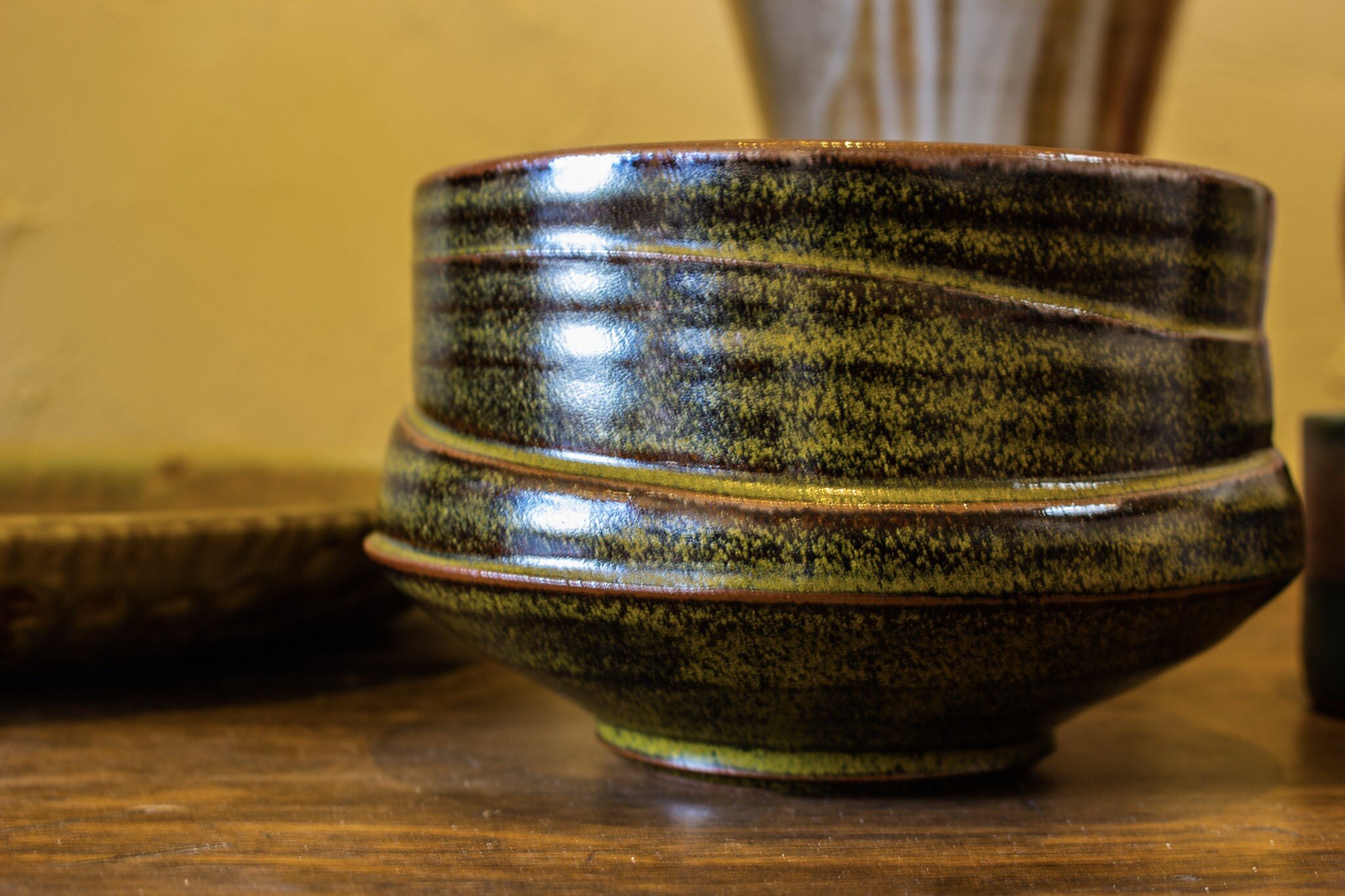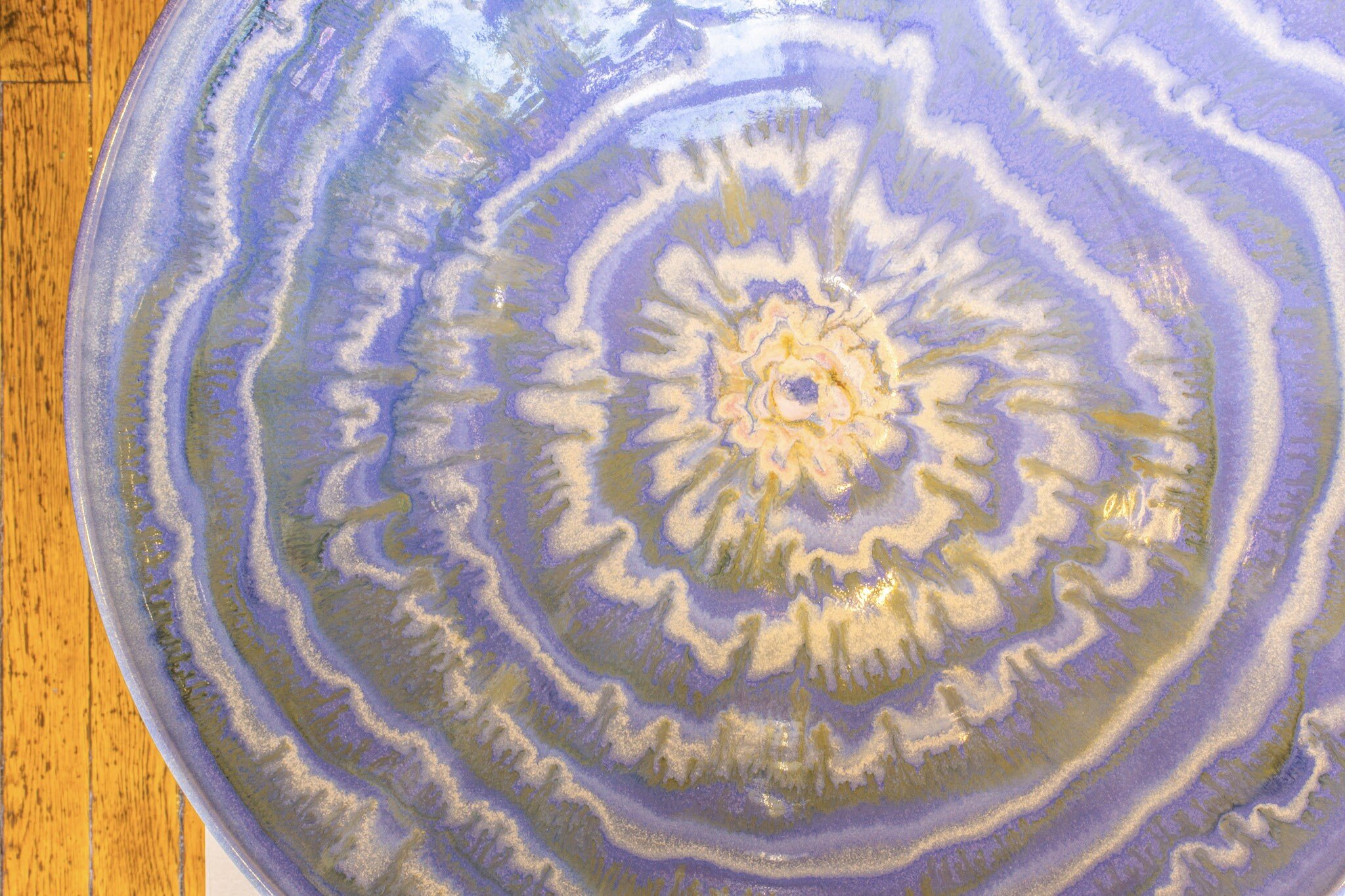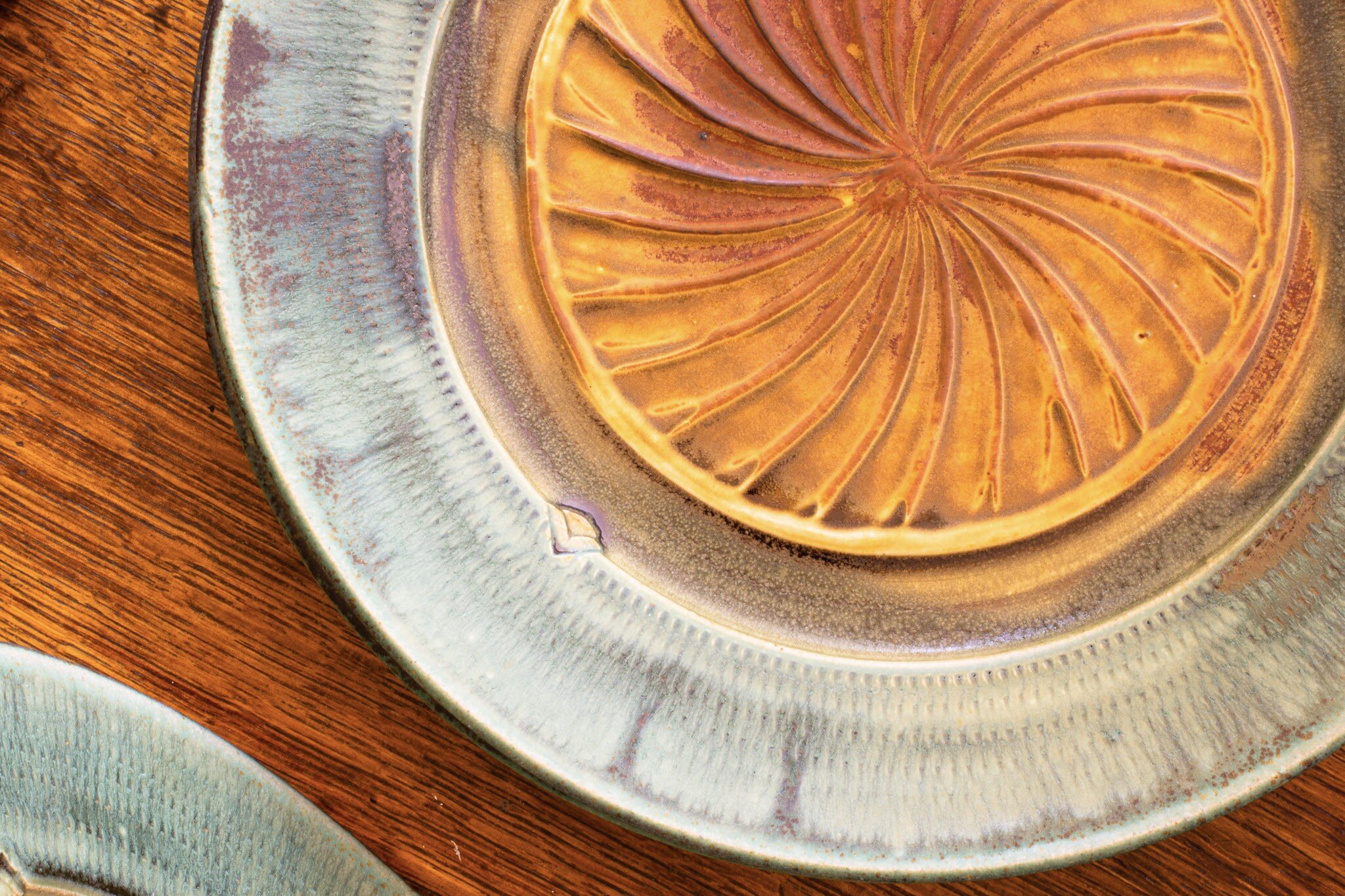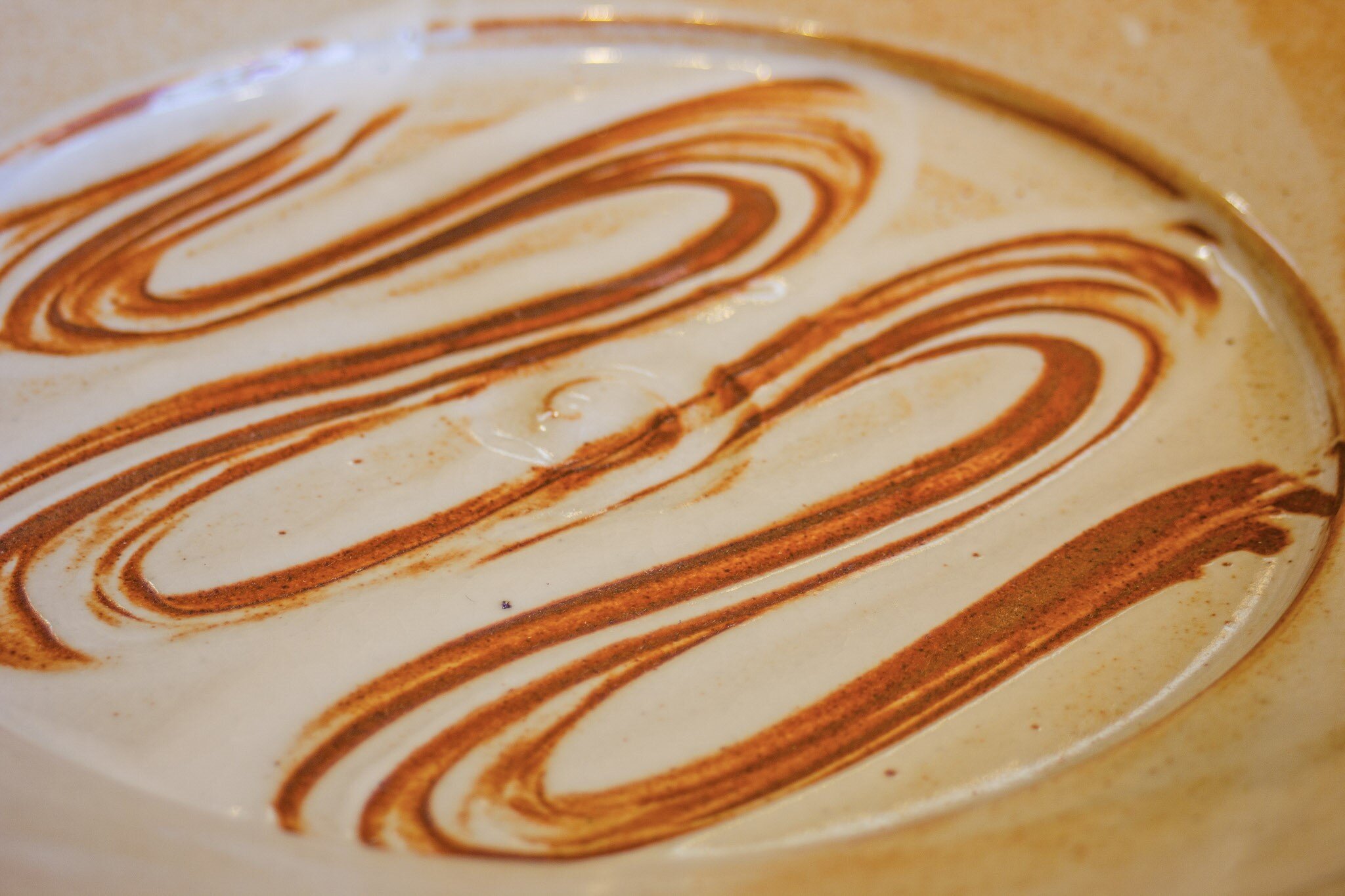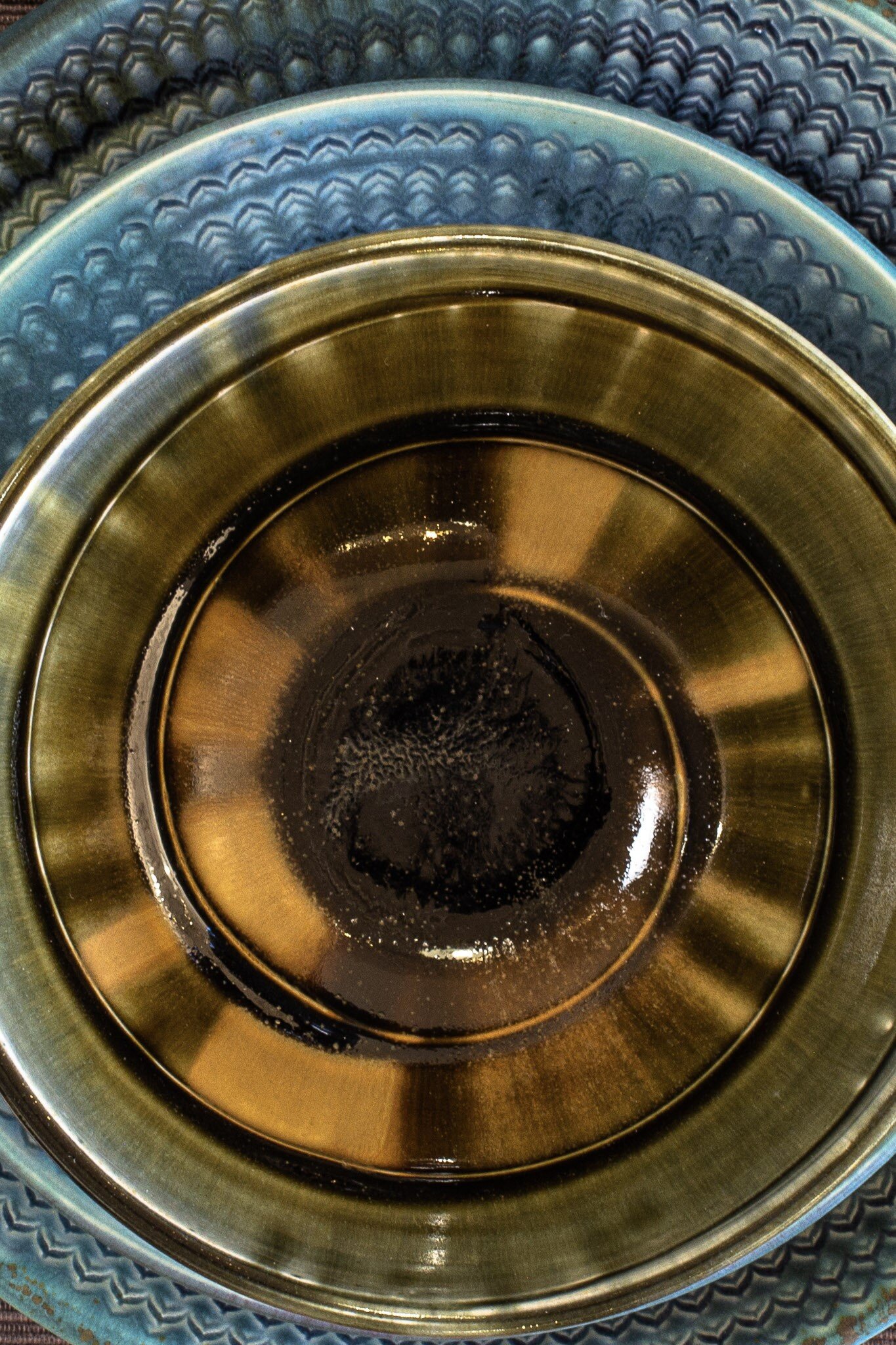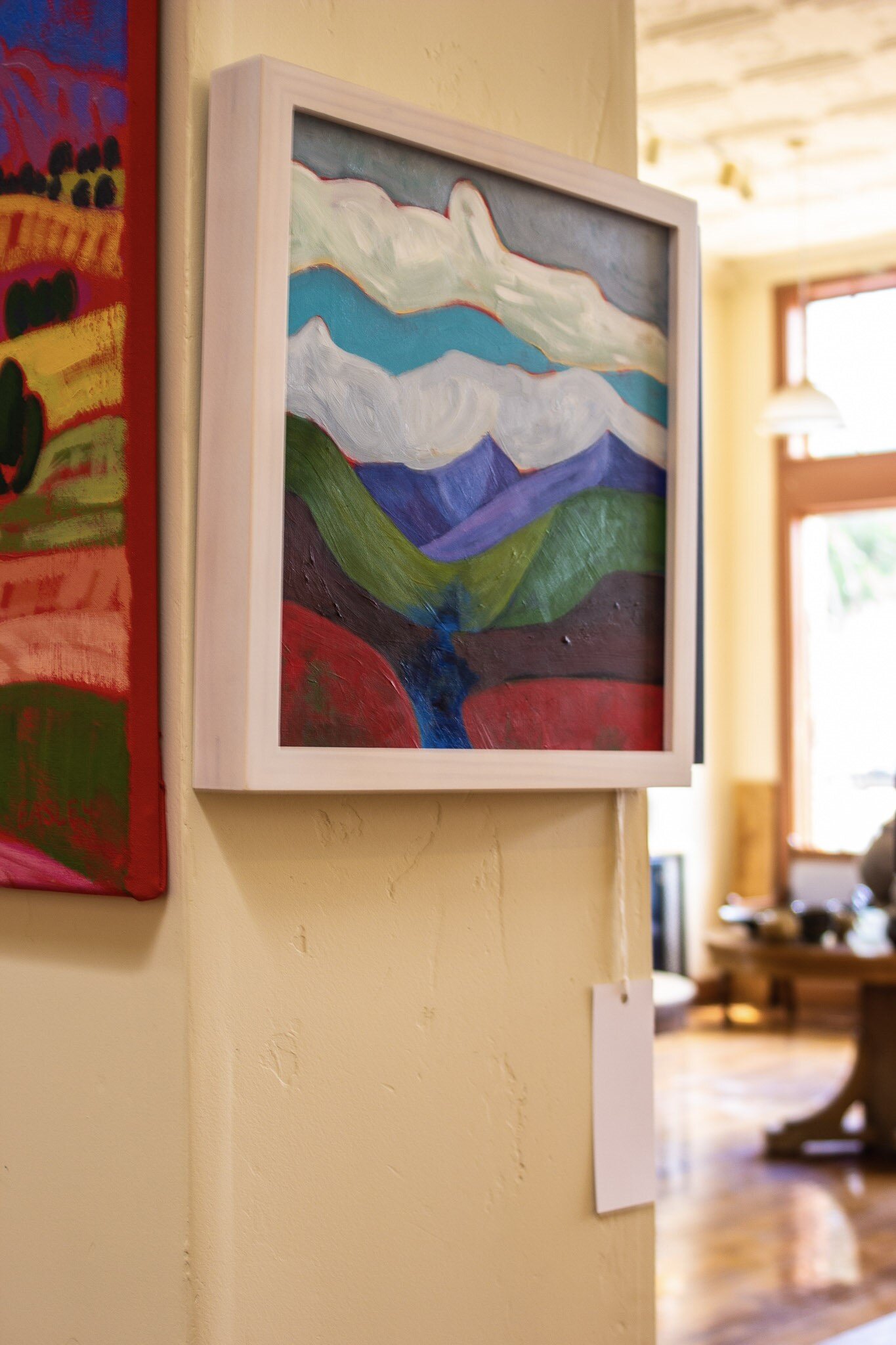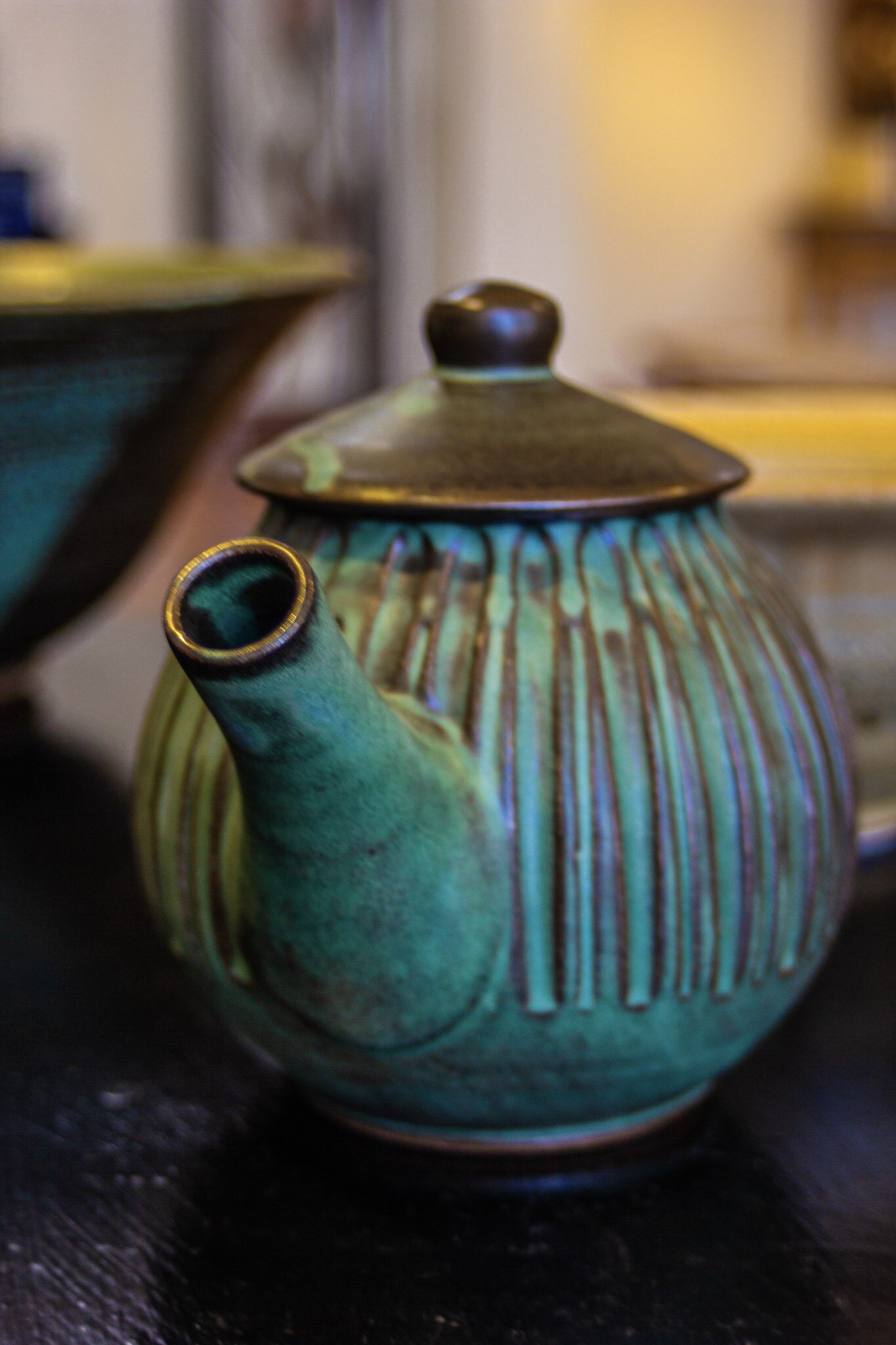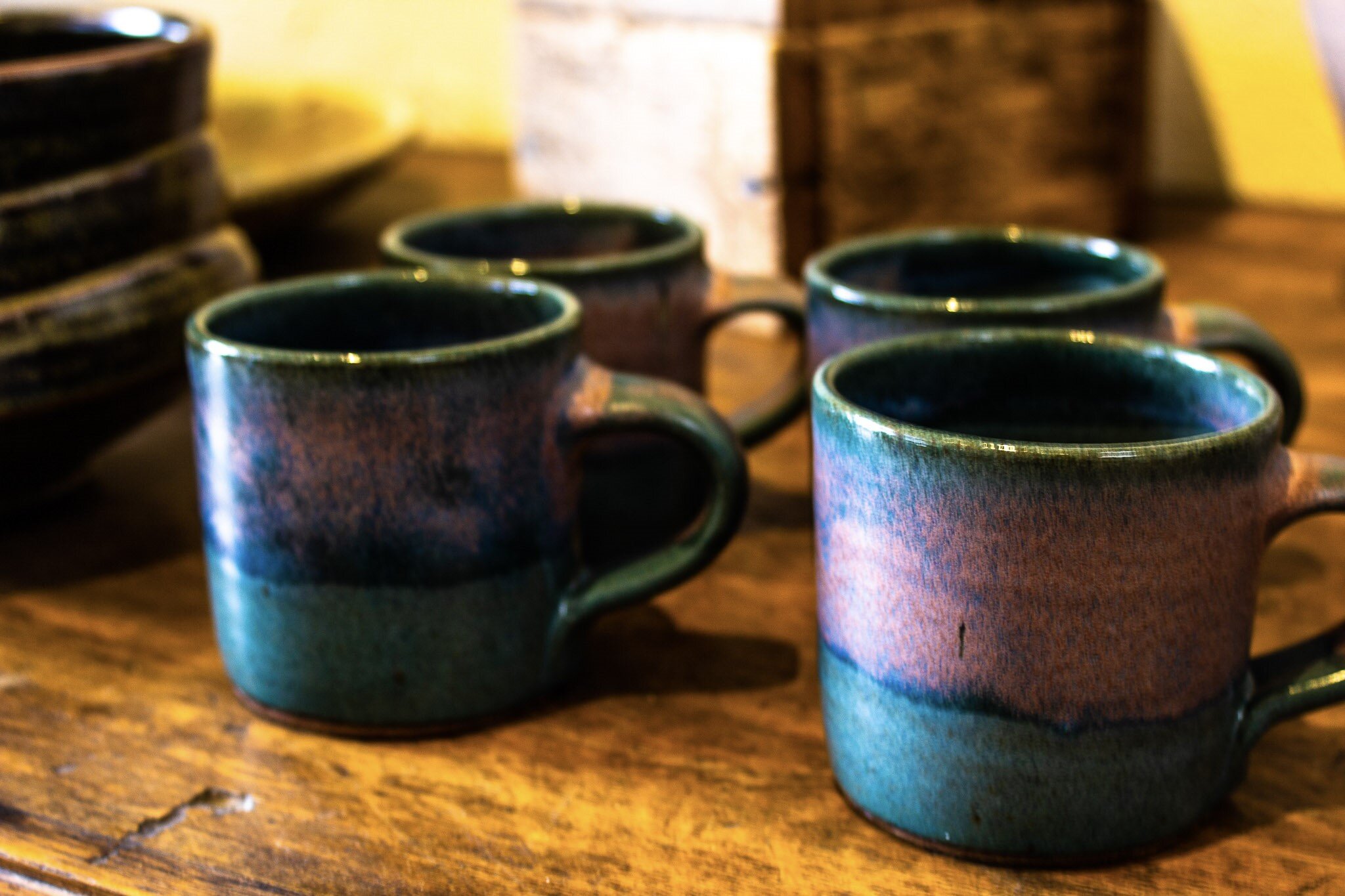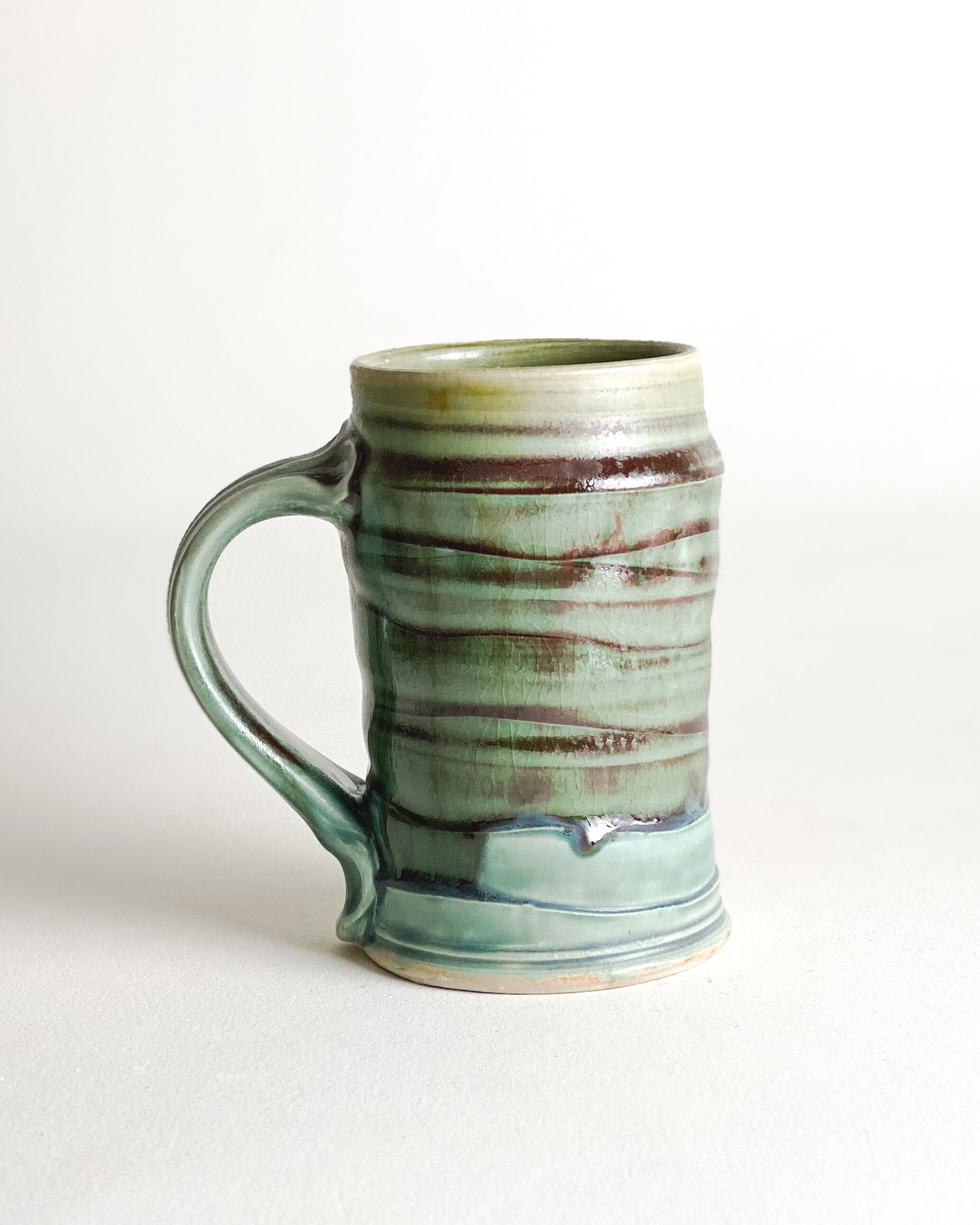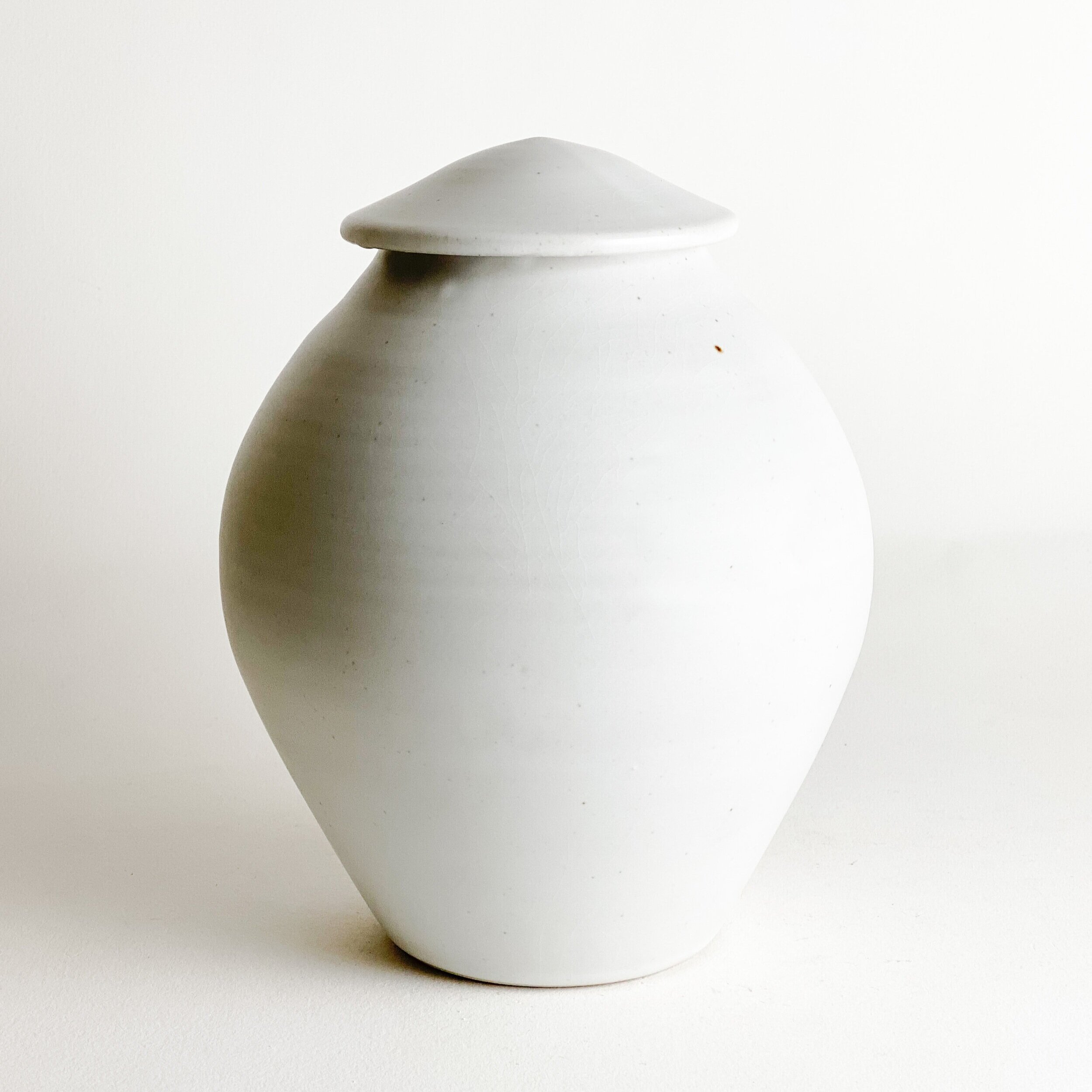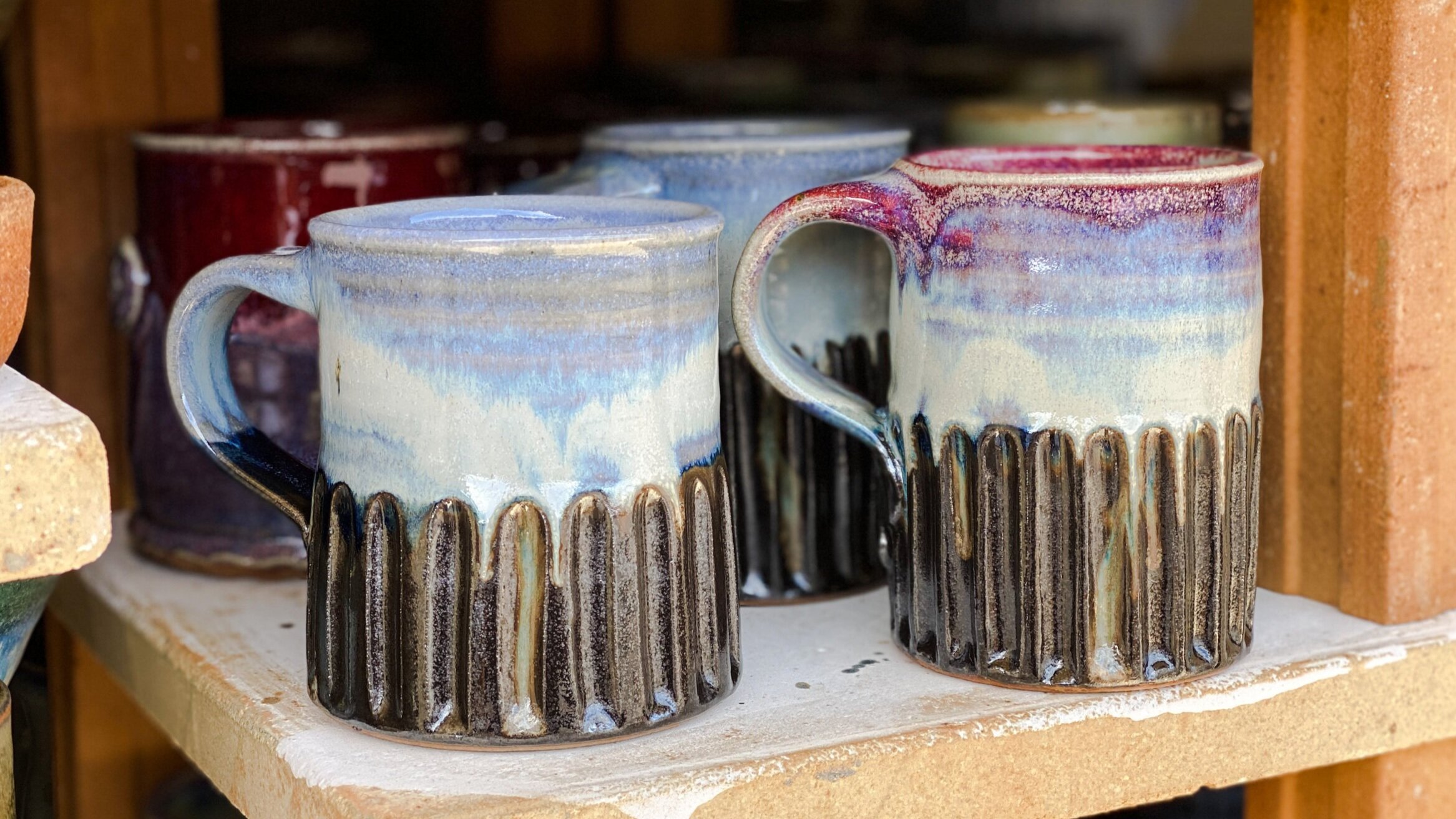The Study
To begin this commission, I did several gestural pencil sketches from original photographs of rural New Mexico. The primary photographic reference is a scene with tall, thin trees in the foreground, wild sagebrush in the middle ground, and mountain ridges in the background. Beginning with a photograph helps me envision the final painting, but I never feel bound to the captured scene. When I started getting serious about art, my mother reminded me that artists “move things around”. Mama knows best! The more experience I gained in drawing and painting, the more comfortable I became with the “moving around” process. Now, I mostly use photo references as a jumping-off point.
After sketching, I painted a textured watercolor paper with a thin wash of red paint. A mixture of Cadmium Red and Quinacridone Magenta creates a vibrant background that is somewhat neutral in color temperature. Starting with a red underpainting is also a little nod to the Fauves. I let the base coat dry before drawing the scene with oil pastel. (That is the Alla Prima part.) Satisfied with the color scheme emerging with the oil pastel, I began to think about the space where the art would be installed. I then stretched and primed three small 8” x 15” canvases on some old frames I had in the studio. Next, I began a multi-layered three ‘panel’ study with acrylic paints. I thought three canvases depicting one large scene would give the viewer the impression of looking out a window into a fantastical, colorful world. It is also another little nod to works from the past, this time to European paintings from the Middle Ages when triptychs were so popular.
Again, I painted a reddish layer to begin. I knew this painting would need to be more ‘cool than warm’ to visually ‘pop’ off the richly glazed orangey wall where it would be hung. Beginning with a red underpainting was excellent because it allowed me to paint complementary greens and blues for the following layers. I like to do a small study with the exact dimensions as the final piece because it allows me to work out the composition using shapes and spatial relationships, elements essential for landscape paintings. In a large landscape painting, I try to create visual pathways that will lead the viewer’s eye into the painting and move it around the scene. I also consider how to create an illusion of space using basic perspective techniques such as overlapping, scale, and value changes since I often defy the conventions of overt realism.
Using three canvases to create one scene appealed to the clients, so I ordered new gallery-wrapped canvases that sit 2.5” off the wall. The modular approach allows the canvases to be moved and hung more easily than one large, heavy canvas. It also allows me to fully embrace the three-dimensionality of the deep canvases by painting the scene around the edges. One of the benefits of this is that it looks best without a frame and further simplifies installation.
From Study To Painting
Every mark you make in a painting informs the next, so naturally, every painting is different. Even when I paint a study, the larger artwork will be unique. One of the things I intentionally changed from the study is the light source. When painting the study, I imagined the sun setting but later felt everything remained too dark. For the final piece, I imagined the sun higher in the sky, backlighting the trees with a warm olive-green line and infusing the clouds with a pinky-orange glow. Lightening the contour of the trees allowed them to stand firmly in the foreground and created a more convincing scene.
The trees have at least five layers of paint. I started with an undiluted Pthalo Blue to paint the shapes, as seen in the first photograph. I then layered green paints to make the trees feel substantial. While trying to increase the density of the trees, I lost much of the underpainting. I decided to add strokes of Mars Black and Alizarin Crimson over the green and then add another layer of green to unify it all. I love how the trees turned out, and I plan to rework a few trees in older paintings with a similar approach.
In this painting, I wanted the warm oranges and pinks in the foreground to suggest the earth under the grass and, simultaneously, be similar to the room's color. I try to use the same hue in at least three different areas of a painting. I have found it not only moves the viewer’s eye around the work but also aids in creating unity and balance. I often don’t repeat the same exact color throughout a piece, but I will use the first color and mix it into another. In this painting, I carry the orange of the earth into the clouds and sagebrush.
After about thirty hours of painting the three final canvases, the artwork felt finished. It’s important for me to make sure that the spaces read correctly, but at the same time, I want to leave expressive marks and reveal contrasting colors. Trying to make it too “perfect” can lead to a very boring artwork, and I believe that should be avoided! It’s time to show it to the clients when it is completely finished. The clients for this painting loved it, and I am so happy!! They immediately installed it at home and sent me the photo below.



